"Namaste" - same word, same meaning but different language - we're in Nepal! Country 34 on our trip. We are all excited about the prospect of hiking in the Himalayas but first want to explore some of the Terai first, the flat bit in the south. We entered the country at Banbasa, a small border post in the far west, turning off the main road through the closed village market we took the single width tar road through the forest to a river. Across the top of the dam sluice gates was an incredibly narrow 400m bridge. We paced out the width, working out we would just fit on, paid our toll and gave it a try. Early in the morning it was just a few pedestrians, cyclists and motorbikes that were crossing, we were waved on quickly while it was quiet, just squeezing on with a few centremetres each side. There were a few little platforms on the side for pedestrians to squeeze onto but most people just waited at the end apart from one ice cream seller on a bike. Even though we were almost over, he decided he couldn't wait and was going to take on a truck. Eventually he squeezed himself onto a platform and angled his bike half through the fence but his ice cream box was still out in the road. I wanted to help but couldn't open my door, we waited another age while he untied his box and lifted it onto the platform, surely it would have been easier to wait a few seconds on the opposite bank. On the other side it was quiet and peaceful, so different from some of the crazy frenetic borders we sometimes have to cross, it took just 4 sets of ledgers in different buildings to be filled in and 2 searches to leave India. Then 3 sets of forms; $300 visa fee (Lucy was free); a couple more ledgers we we were on our way. New adventures awaited us; the sun was shining; the roads were far quieter than we've been used to; and the driving appeared to be good - big smiles all around.
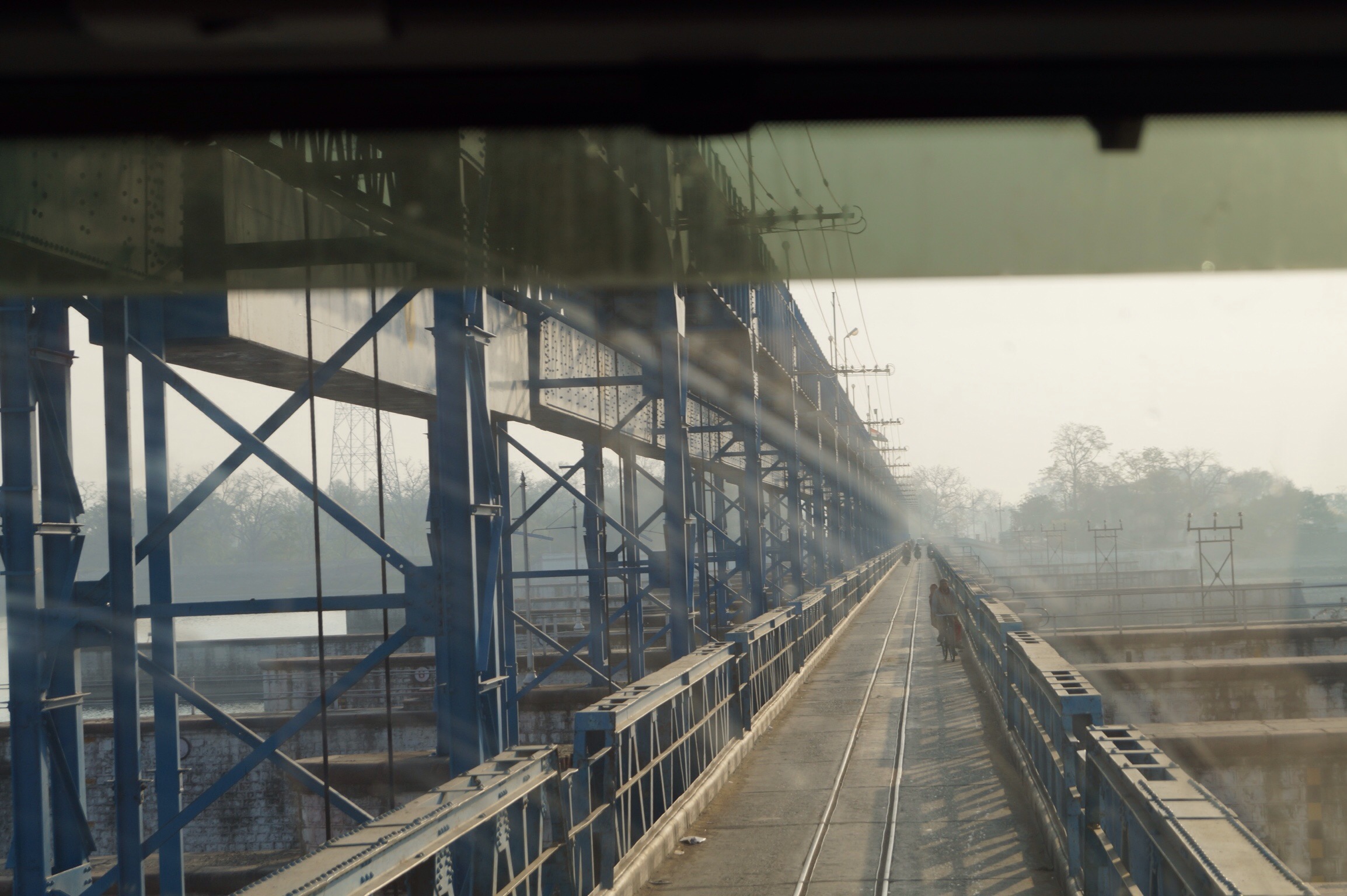
We found a wonderful camping spot just outside Bardia National Park in the gardens of Bardia Ecolodge. Narayan, the owner, had been involved with commercial overlanding companies in Kathmandu for years, that side of his business might have almost completely dried up but he had kept them in mind when planning his hotel. He even had an old Encounter Overland truck he had bought when they went bust and was turning into a bar. It was a perfect spot, there were birds everywhere and the park was just on the other side of the river just outside. We needed a couple of days to relax and catch up with jobs. Walking through the village outside the park in the afternoon, school girls came over for a chat and everyone was so friendly. We made sure that we were safely back at the truck before nightfall, there were lots of stories of leopards taking dogs and goats from the village.
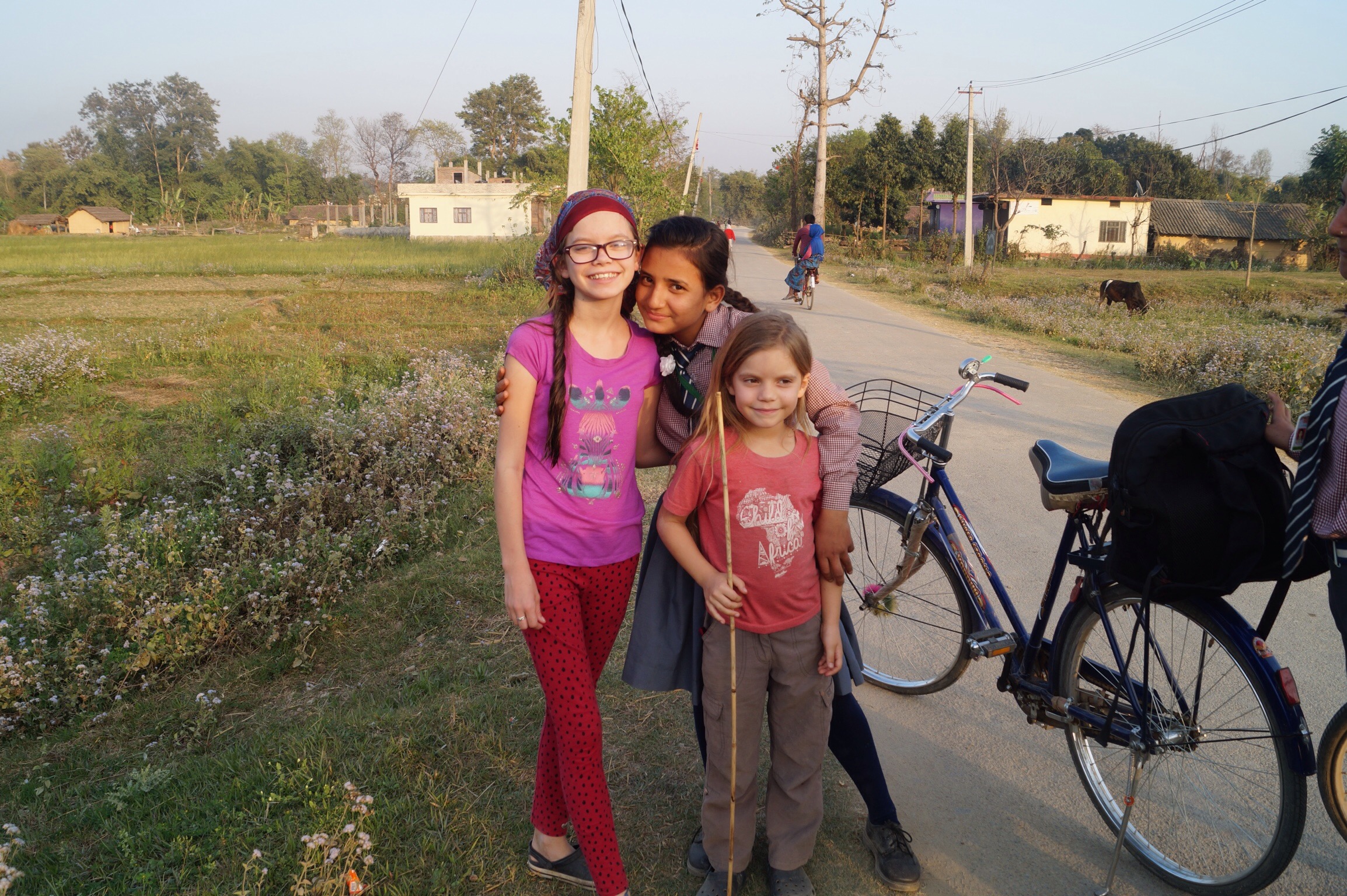
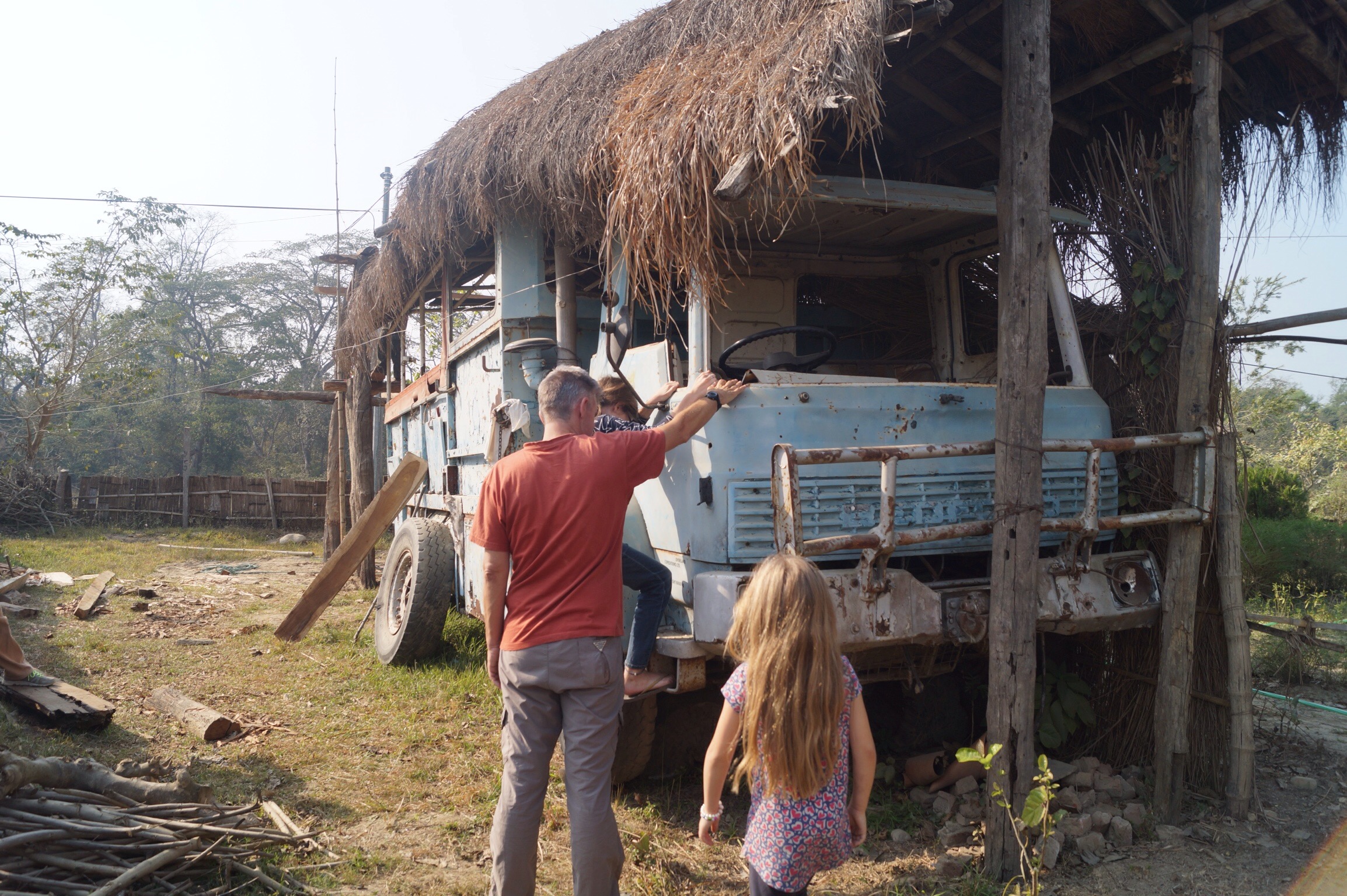
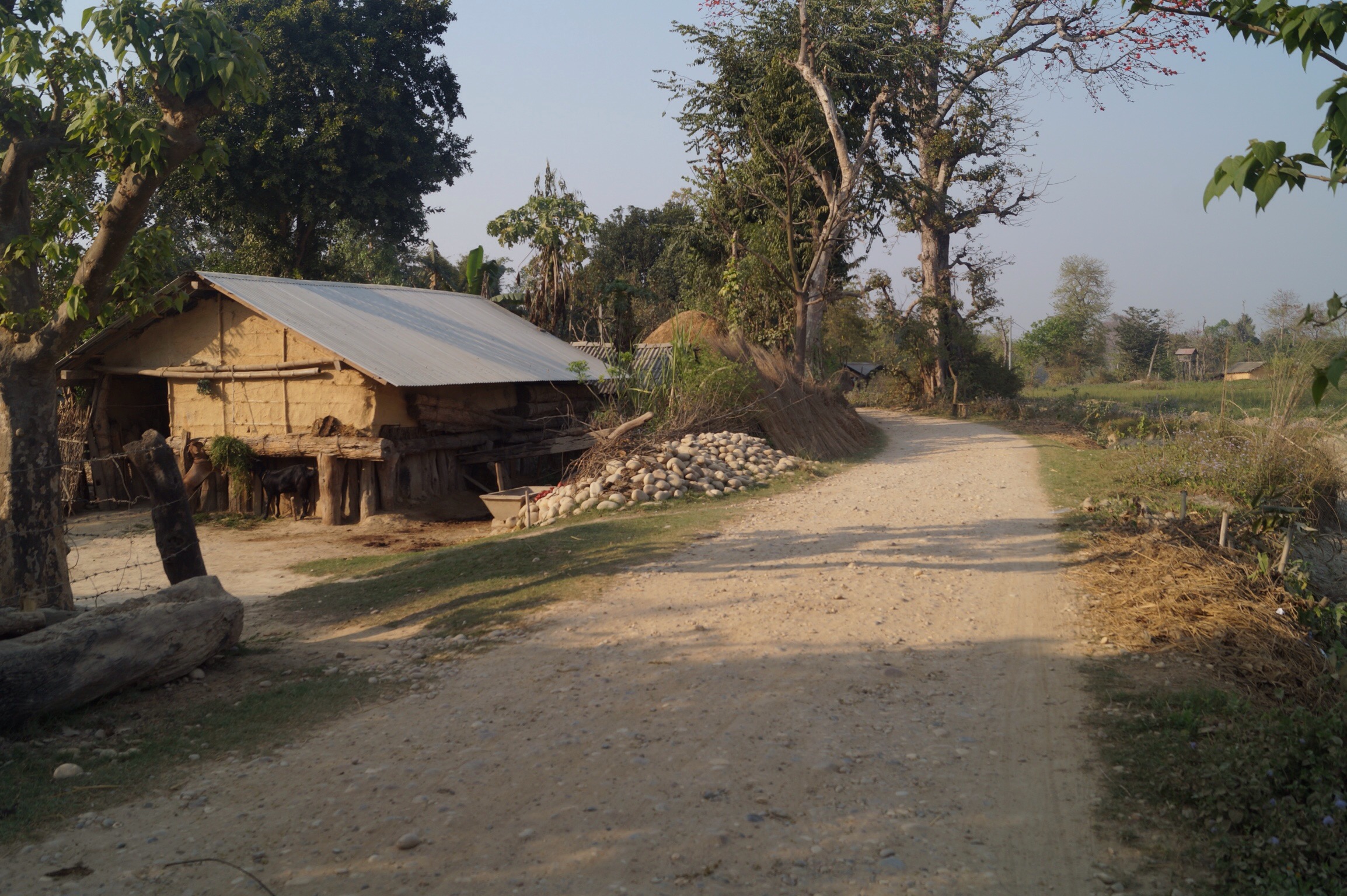
The possibility of tigers and rhinos soon lured us from our stupor. After the advice we received from locals in Zimbabwe about not walking with the girls anywhere near big cats, we declined the more popular hiking and opted for a jeep safari. Supposedly although completely wary of people, the cats focus in on any children in the group. We survived hiking through lion territory in Africa with rangers before we'd been advised it wasn't the best thing to do, we weren't going to try it with tigers now.
We hopped into the jeep with a friendly English couple and set off taking the scenic route all morning through the Sal forest to a spot on a riverbank. Out of the jeep we found several other groups of people waiting in the shade, eyes peeled on the opposite bank. Steve took a little nap; Alisha read her book; and Lucy made mud pies in the dirt, it was very relaxing but not much to see. Just when we were about to all drift off the guide came running from a little further down the bank, "Rhino!" he whispered. Sure enough there were 2 rhinos crossing the river about 250m away, they were then joined on the opposite bank by 2 more, it was lovely to see. About half an hour later, just after the rhinos had ambled into the bush, another whisper came "Tiger!" A lone female came out of almost the same spot in the bush as the rhino, and lounged on the bank. By then our small group had been joined by a group of Nepali professional photographers and 2 TV cameras, everyone with a big enough lens got happy clicking away. Even for our 300mm wildlife lens it was too far away to get any decent shots and you needed binoculars to see clearly but everyone else was happy. As the tiger lounged, Alisha got talking to the photographers about wildlife photography, "I'd love another shot like this," Alisha said showing them her tiger photos from India on her point and shoot camera. They were gobsmacked and passed her camera round enviously, even taking a photo of her with her photo. We realised then how lucky we had been to see those 3 tigers in the Indian parks so closely.

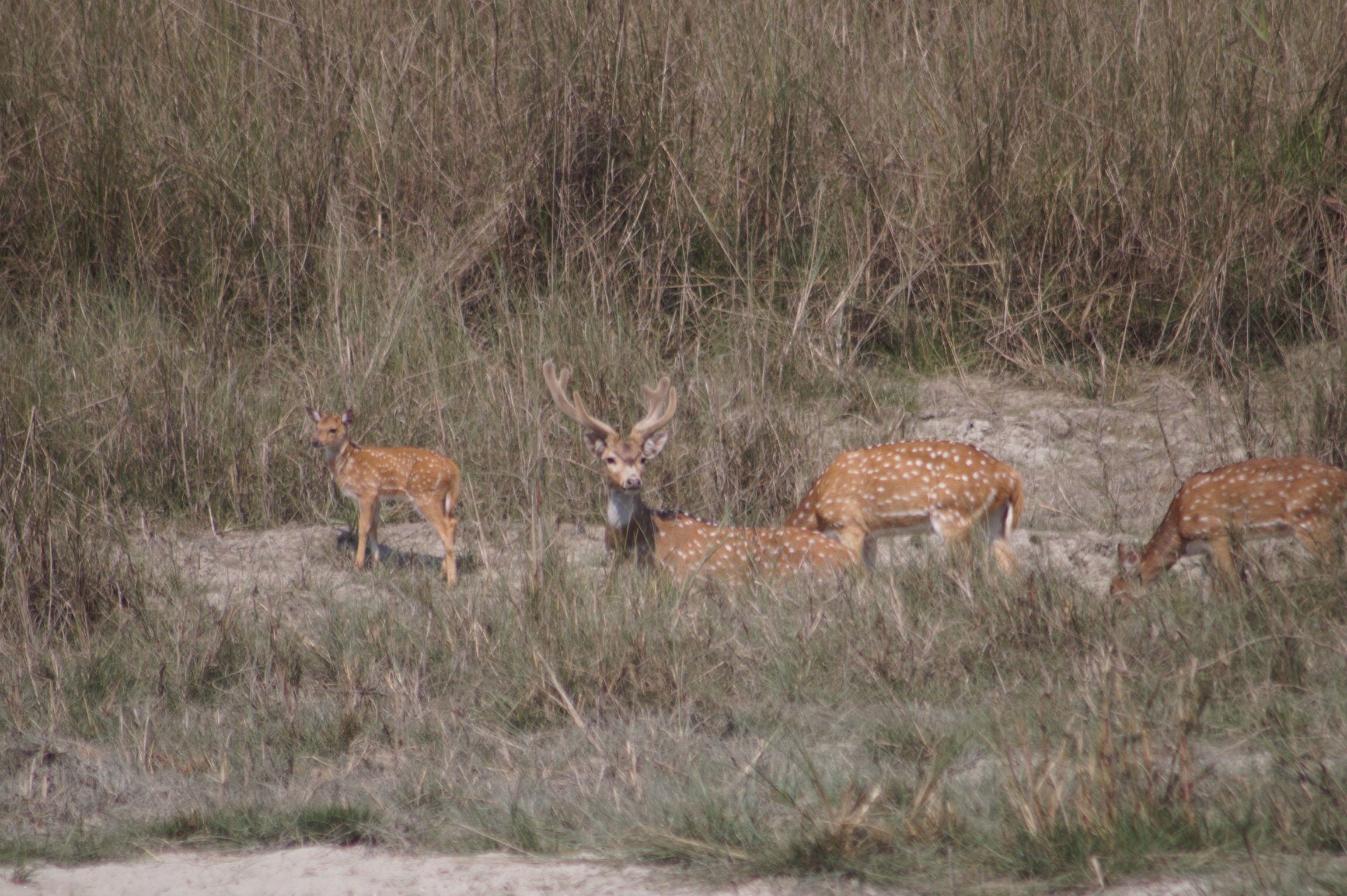
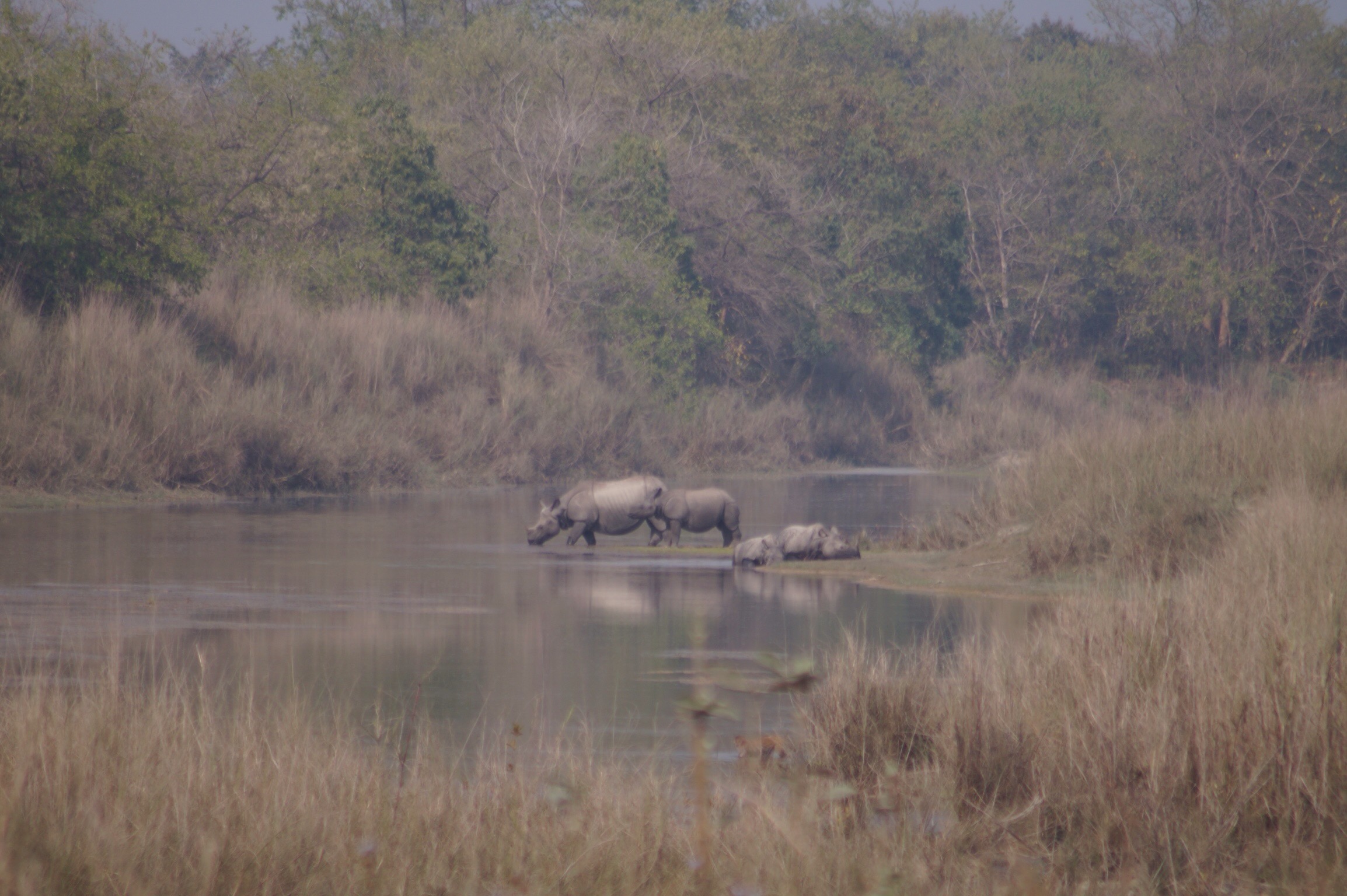
Can you see the tiger?
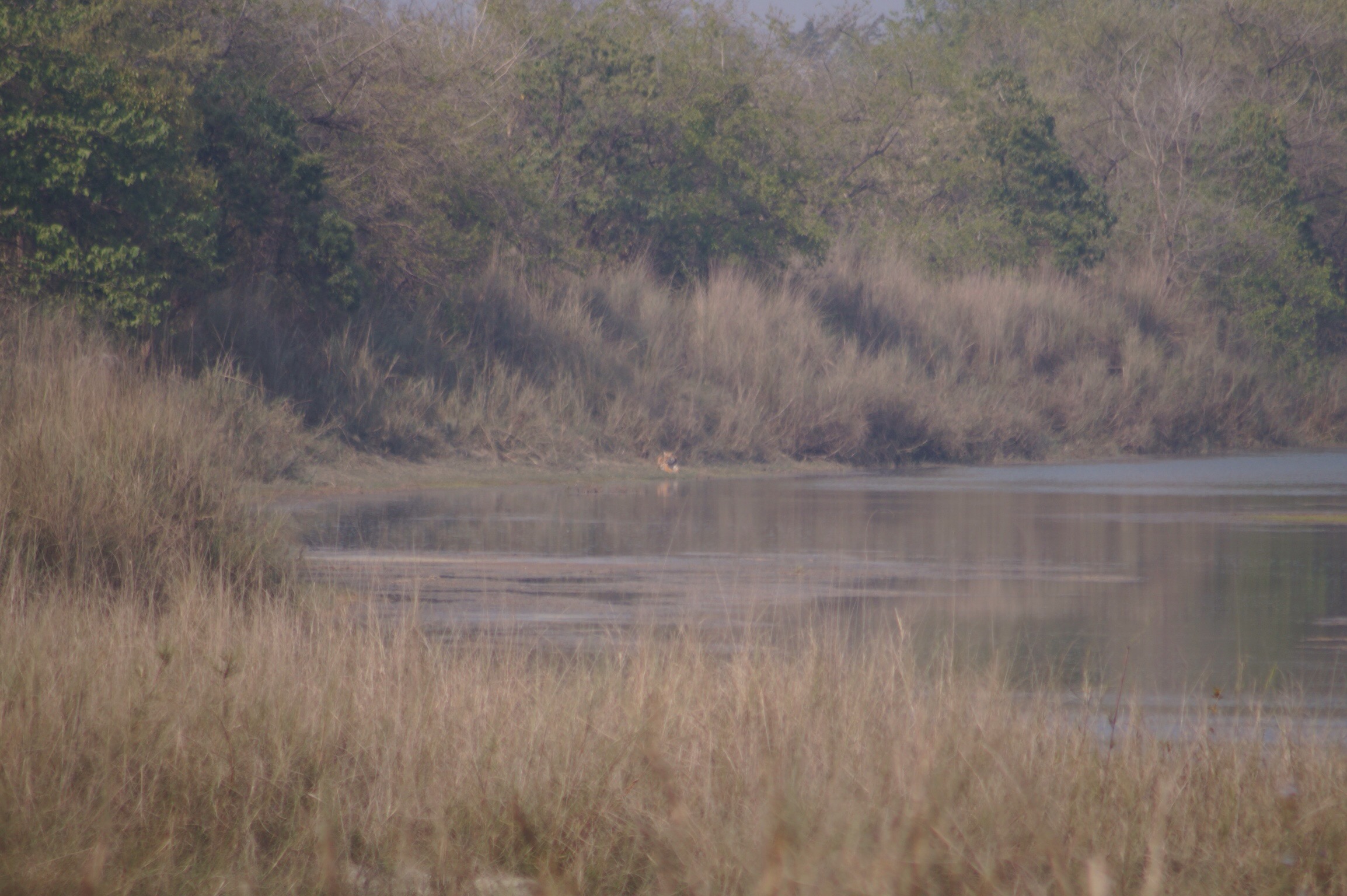
As the sun started to lower on the horizon, we piled back into the jeep. At the entrance of the park we had a chance to meet and feed a blind rhino, that had been orphaned as a baby and therefore couldn't be released into the park. It was very strange to be so close to such a magnificently powerful animal that we had only been able to admire from a distance before. The girls weren't keen on getting too close to it, especially as we'd met a couple of backpackers who had been charged by a rhino that morning.

That night we joined Narayan, some of his friends and the English couple round the fire for beer, chicken and stories. It's been a long time since we've had a chance to have a campfire, something that had been an integral part of our journey in continents like, South America, Africa and Australia.
Unfortunately our respect for Nepali driving came to an end when we hit the foothills combined with larger volumes of traffic. It didn't help that a 33km section of the main road to Kathmandu had been badly damaged by the earthquake in 2015 and was being rebuilt. The trucks our way had been stopped until 3pm, we arrived unexpectedly perfectly at 2.45, as parts of it needed one way traffic. Unfortunately no one had stopped the trucks going the other way. It was a painful and incredibly dusty squeezing around rockfalls as we wound through the foothills. After a night off the road in a hotel carpark, overlooking the confluence of the Trisuli and Marsyangdi Rivers, we were ready to face the rest of the journey. The rest of the road to Kathmandu was just as winding but easy compared with the previous day. As we topped the last hill, we saw the Kathmandu valley spread before us.
Yes, it is a double wardrobe on a bike cart...only in Asia.
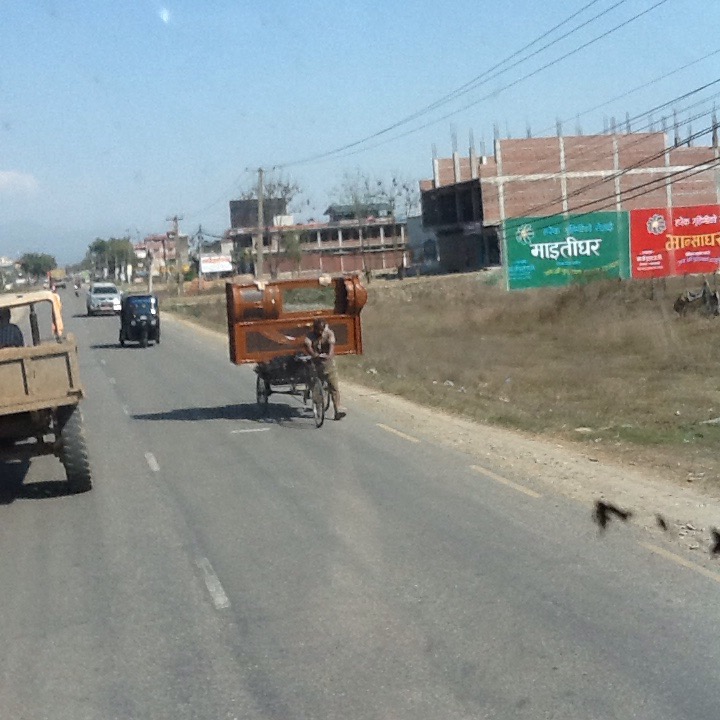


After leaving the truck parked up on the outskirts of Kathmandu we headed into Thamel to find a hotel to base ourselves for a few days exploration.
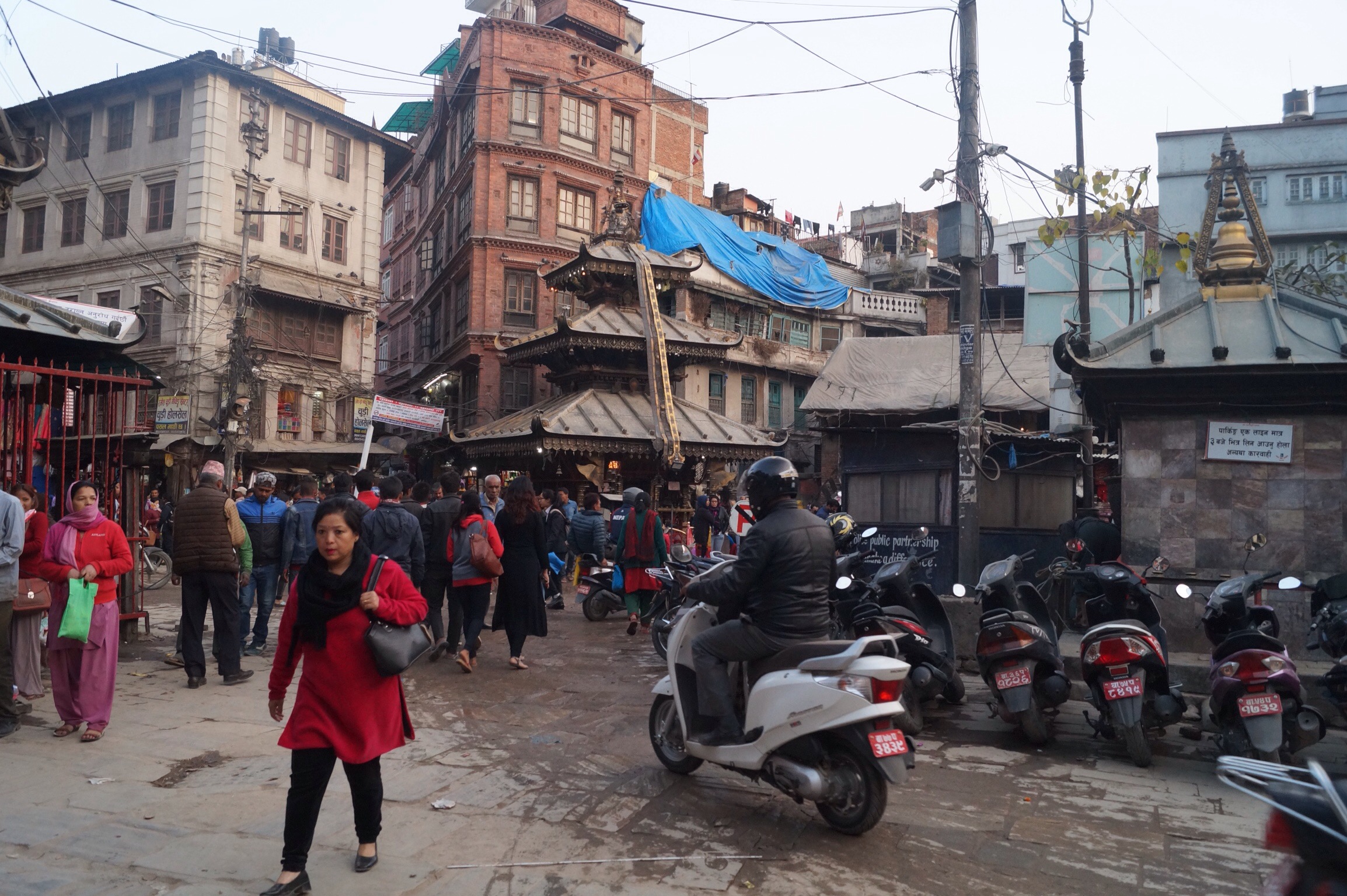
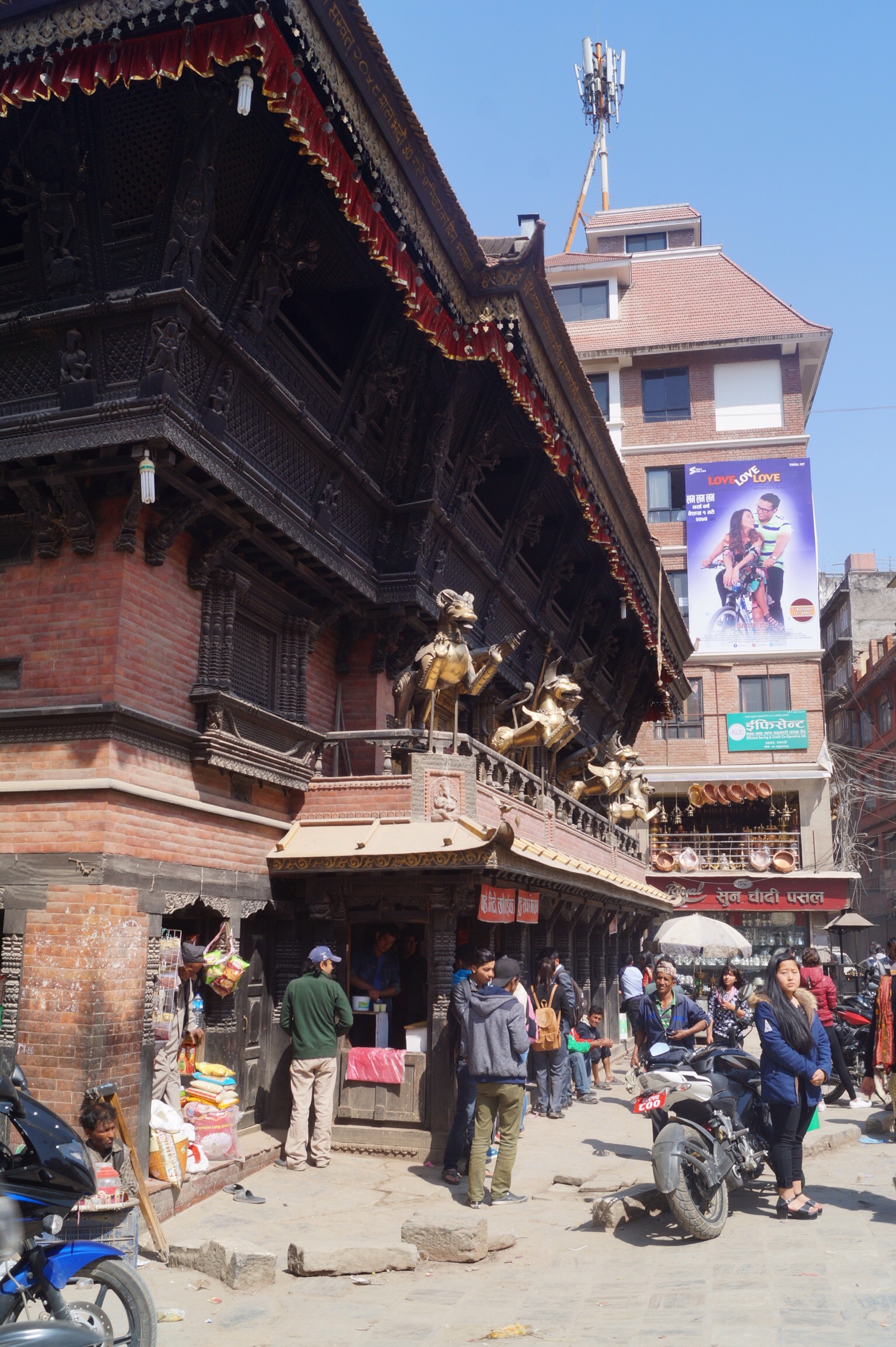
 Unfortunately things had changed since we were last in Kathmandu. Yes there had been development but the biggest change was from the impact of the tragic earthquake which had struck Nepal in 2015. Everywhere we went there were damaged building or piles of rubble where buildings once stood. The Nepalis were working hard at rebuilding but there was a lot of work to do.
Unfortunately things had changed since we were last in Kathmandu. Yes there had been development but the biggest change was from the impact of the tragic earthquake which had struck Nepal in 2015. Everywhere we went there were damaged building or piles of rubble where buildings once stood. The Nepalis were working hard at rebuilding but there was a lot of work to do.
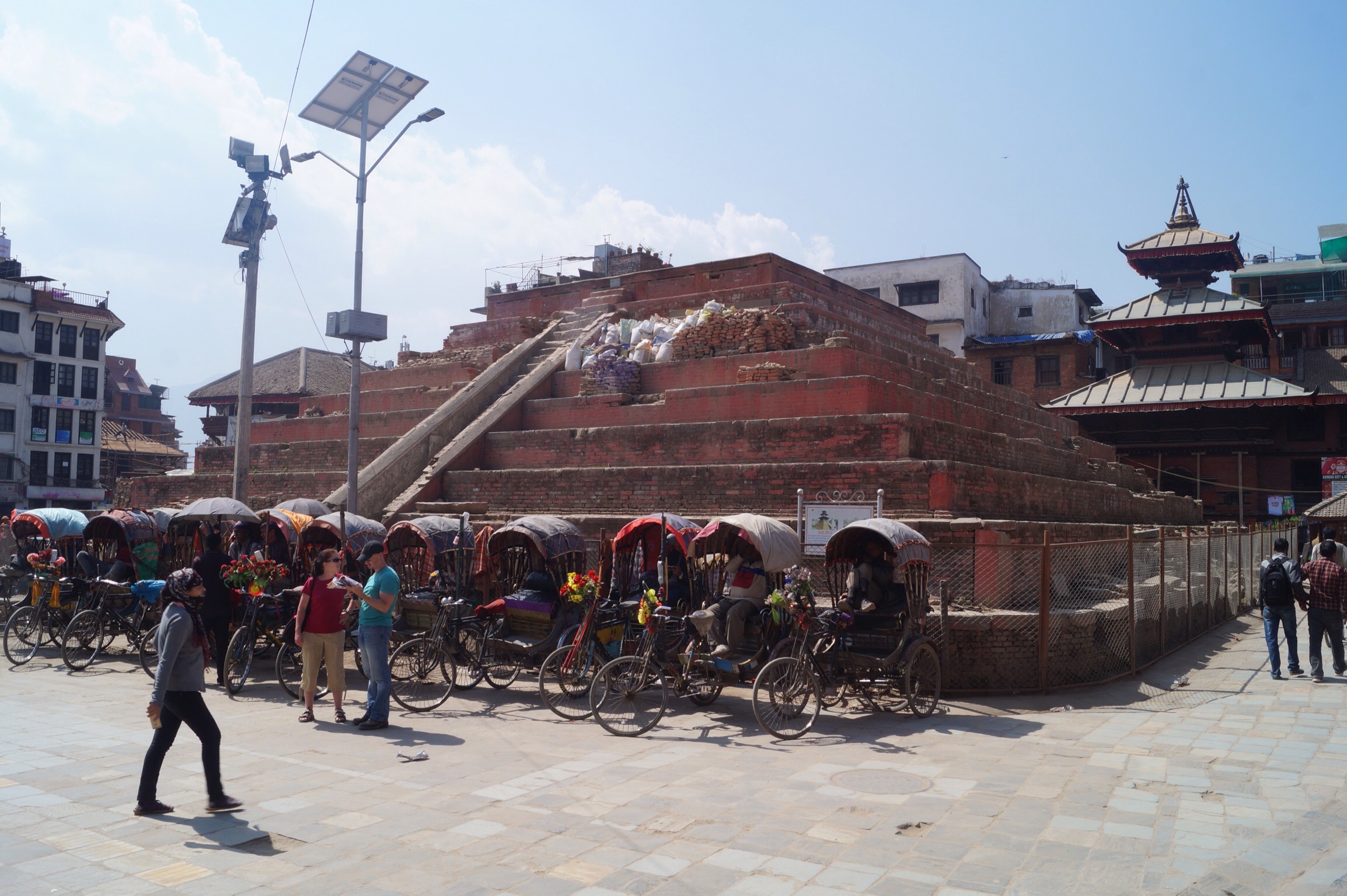
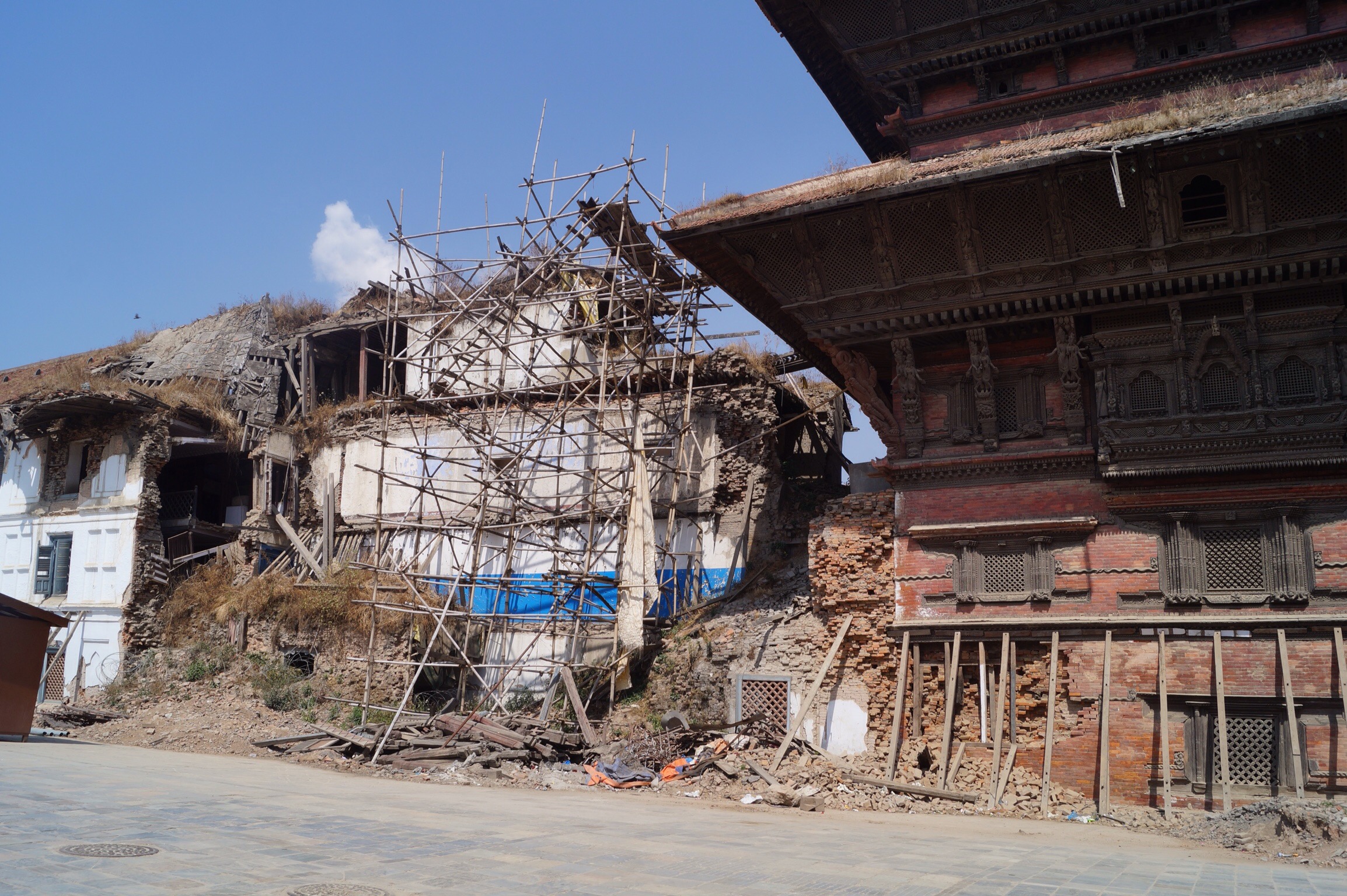 Entering Durbar Square, the medieval seat of royalty with palaces and temples, it was heart breaking to see that many of the magnificent temples had fallen to the ground and where they once stood there were just empty plinths. Whilst there was some rebuilding going on it will be many years before it is fully restored to its magnificent glory. We still had an enjoyable time showing the children around and admiring those temples that had withstood the tremendous force of the earthquake.
Entering Durbar Square, the medieval seat of royalty with palaces and temples, it was heart breaking to see that many of the magnificent temples had fallen to the ground and where they once stood there were just empty plinths. Whilst there was some rebuilding going on it will be many years before it is fully restored to its magnificent glory. We still had an enjoyable time showing the children around and admiring those temples that had withstood the tremendous force of the earthquake.
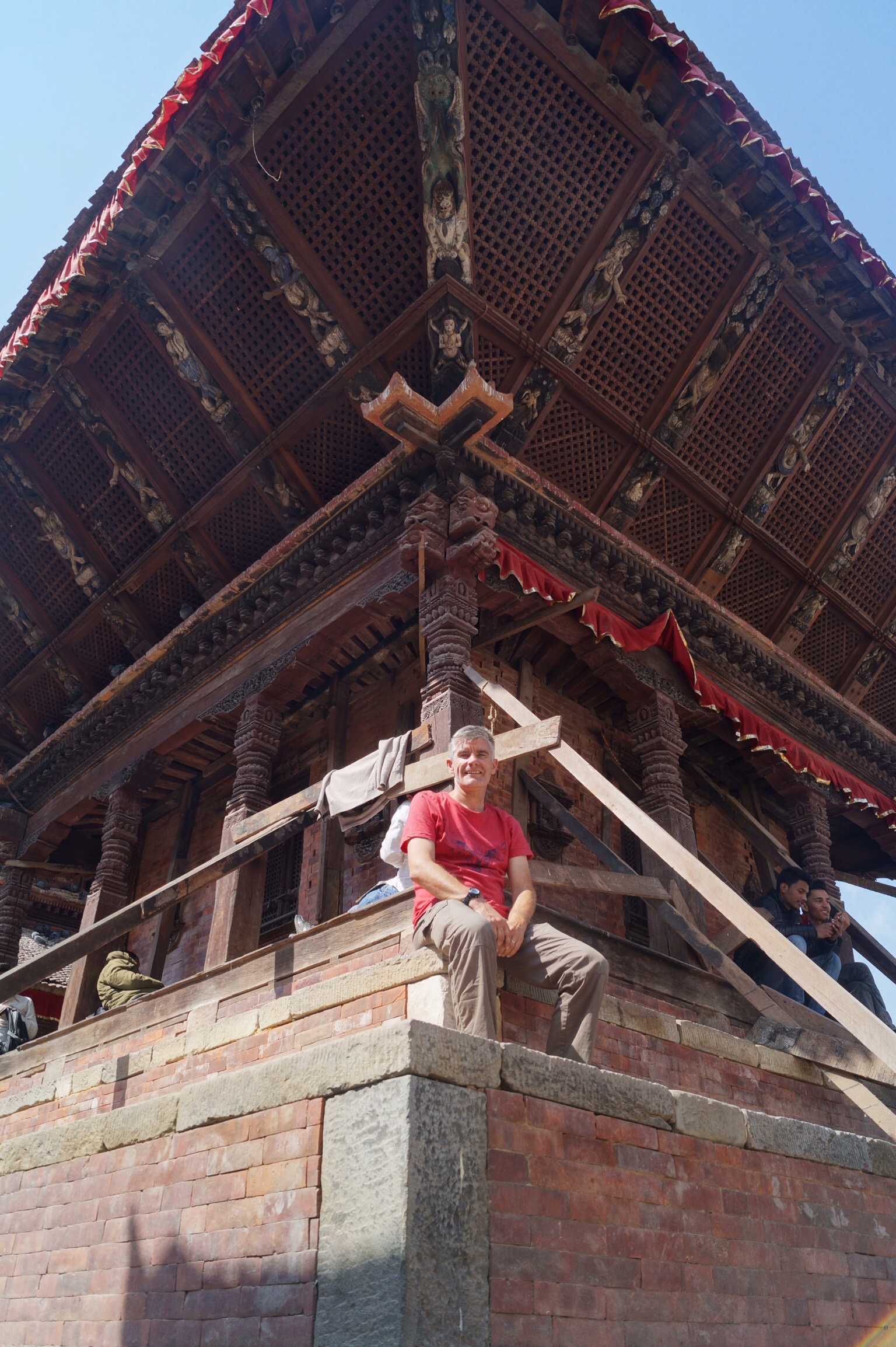
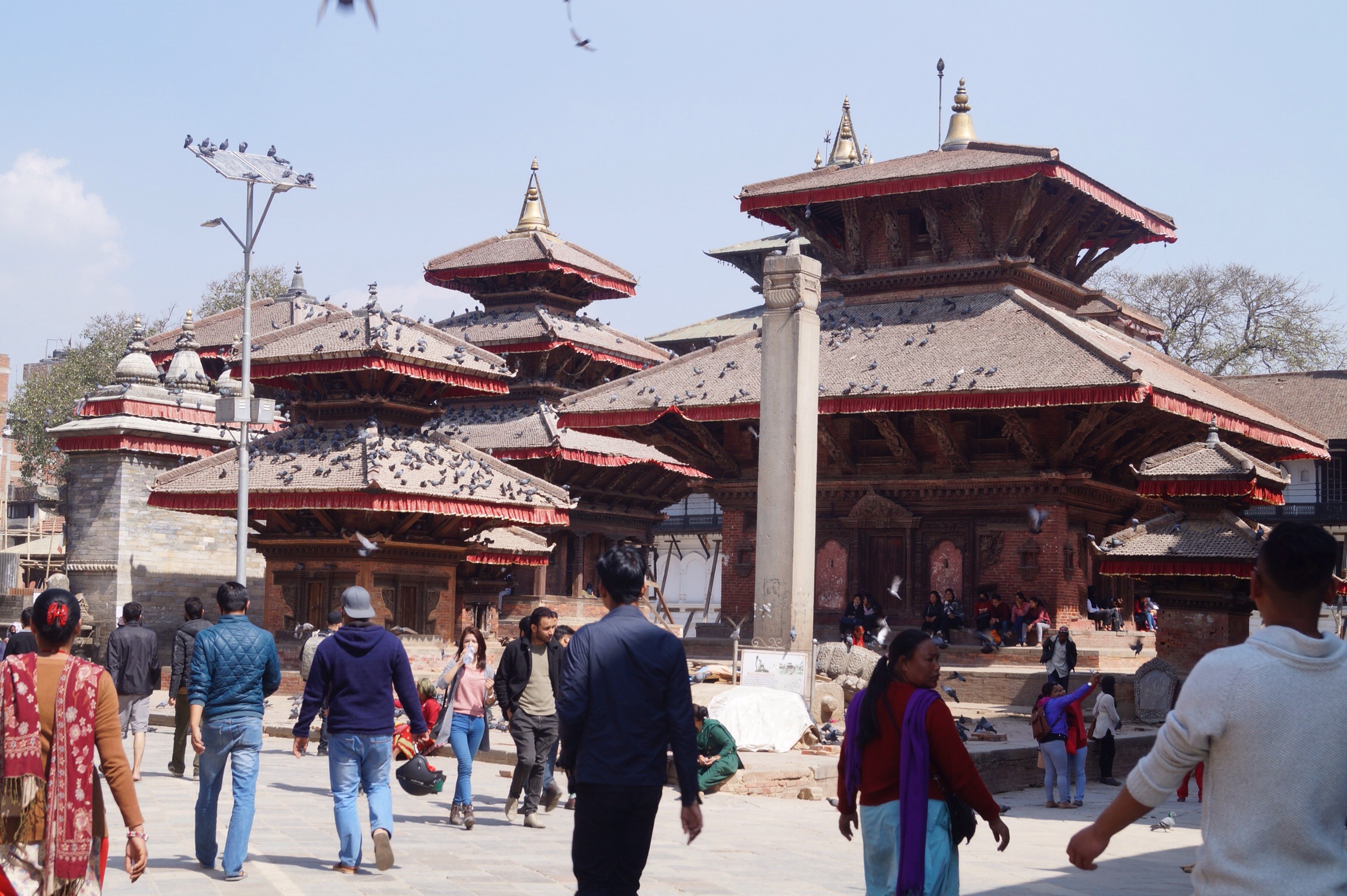 The children were particularly interested in the Kumari's palace which although damaged still housed the Living Godess. The Living Godess is supposedly a young girl occupied by Durga ( a Hindu Godess). The child is specially chosen and lives in the palace until puberty when she returns to normal life. Whilst we were there the Godess made an appearance (no photos allowed) at one of the beautiful ornate windows that surround the palace courtyard.
The children were particularly interested in the Kumari's palace which although damaged still housed the Living Godess. The Living Godess is supposedly a young girl occupied by Durga ( a Hindu Godess). The child is specially chosen and lives in the palace until puberty when she returns to normal life. Whilst we were there the Godess made an appearance (no photos allowed) at one of the beautiful ornate windows that surround the palace courtyard.
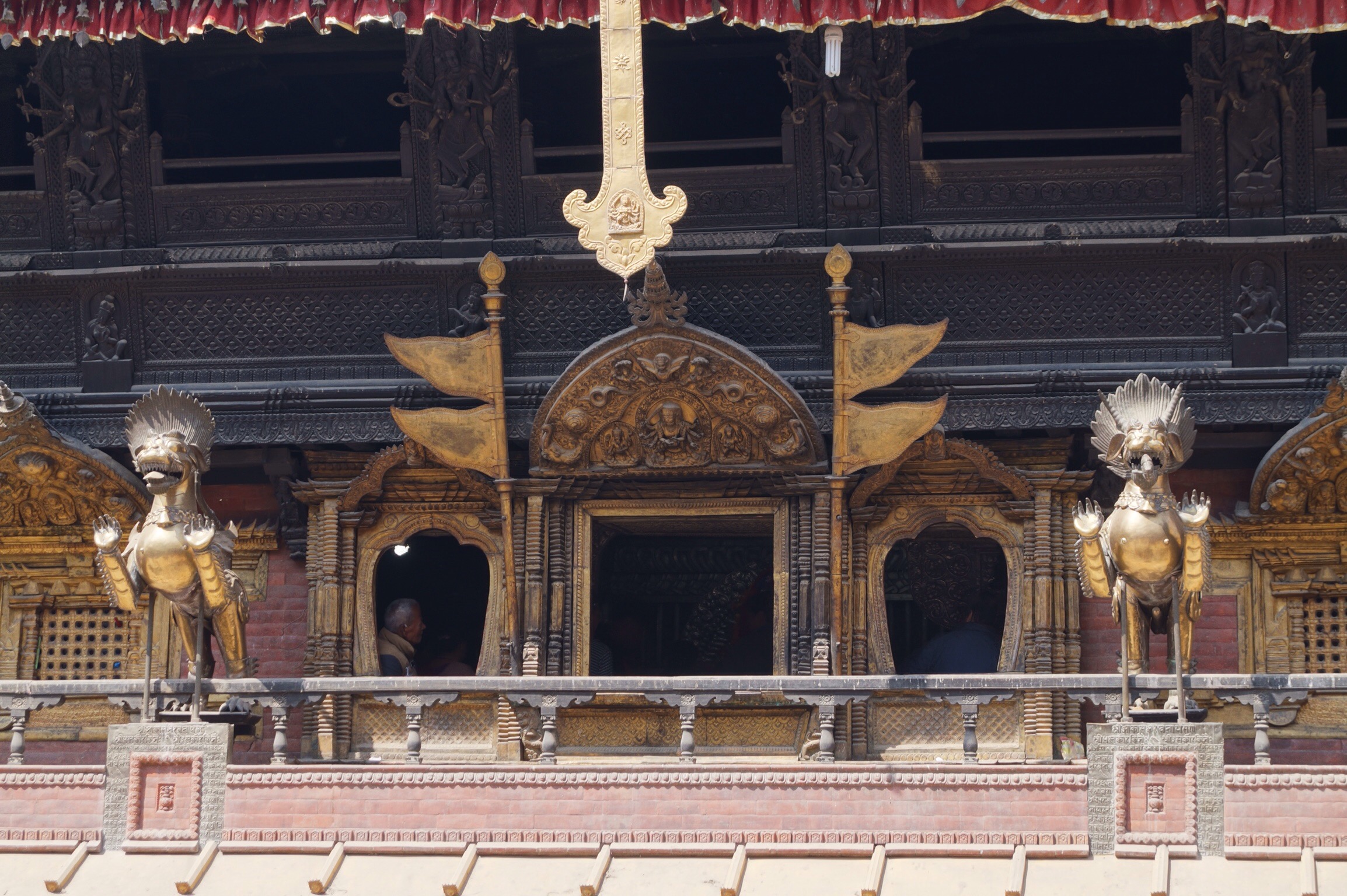
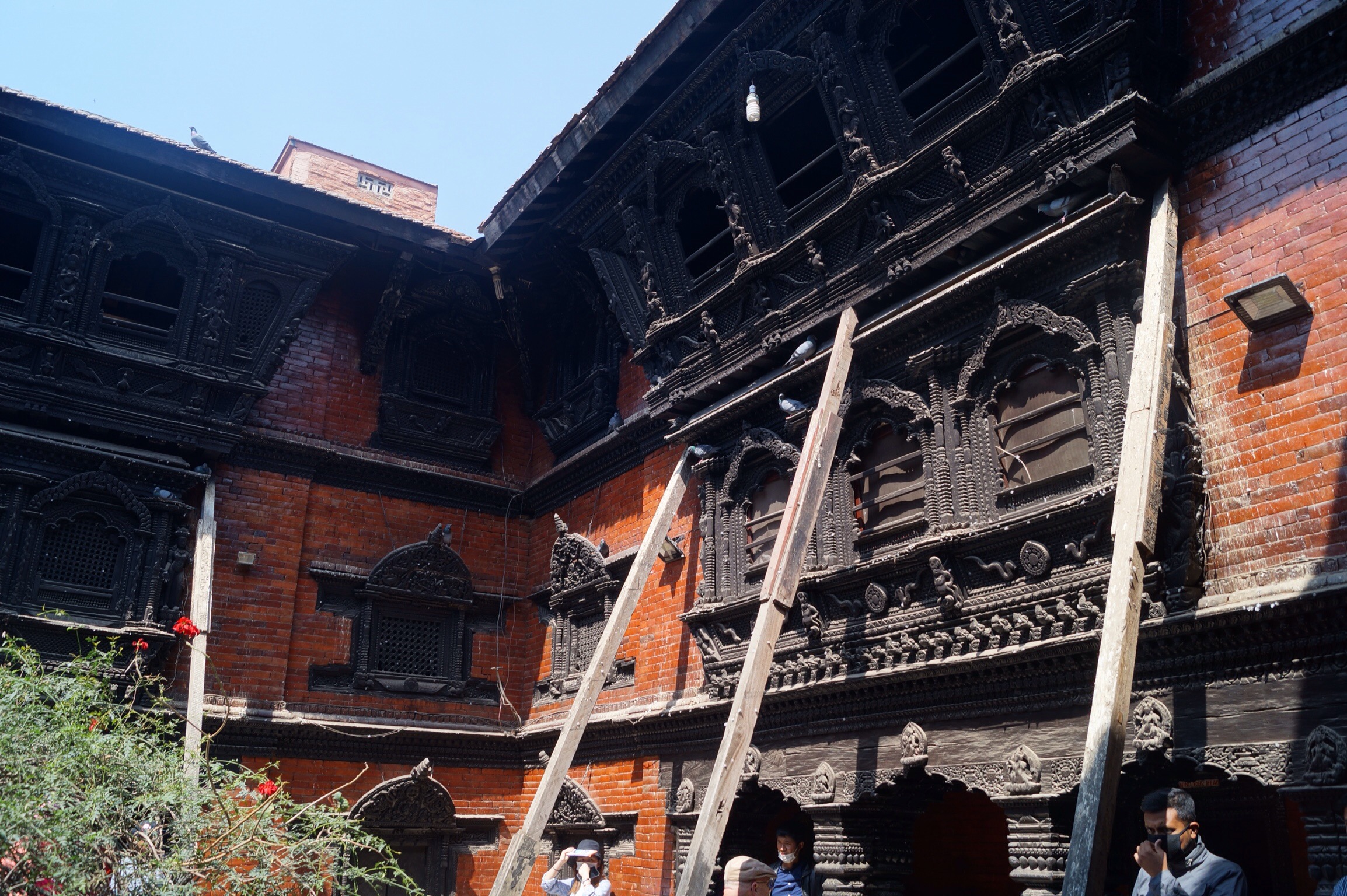 Deciding we needed some trekking practice we hiked up to Swayambhunath ("The Monkey Temple") perched on a hill overlooking the ever increasing sprawl of Kathmandu. It's a beautiful temple with a resident troupe of monkeys looking to grab a snack from unsuspecting visitors. From here we could also see the pollution from which Kathmandu suffers. During our time in Kathmandu we couldn't help but notice the amount of dust in the air. Some of this is a result of the earthquake and rebuilding but it also comes from new building works as well as the brickworks that surround the city.
Deciding we needed some trekking practice we hiked up to Swayambhunath ("The Monkey Temple") perched on a hill overlooking the ever increasing sprawl of Kathmandu. It's a beautiful temple with a resident troupe of monkeys looking to grab a snack from unsuspecting visitors. From here we could also see the pollution from which Kathmandu suffers. During our time in Kathmandu we couldn't help but notice the amount of dust in the air. Some of this is a result of the earthquake and rebuilding but it also comes from new building works as well as the brickworks that surround the city.
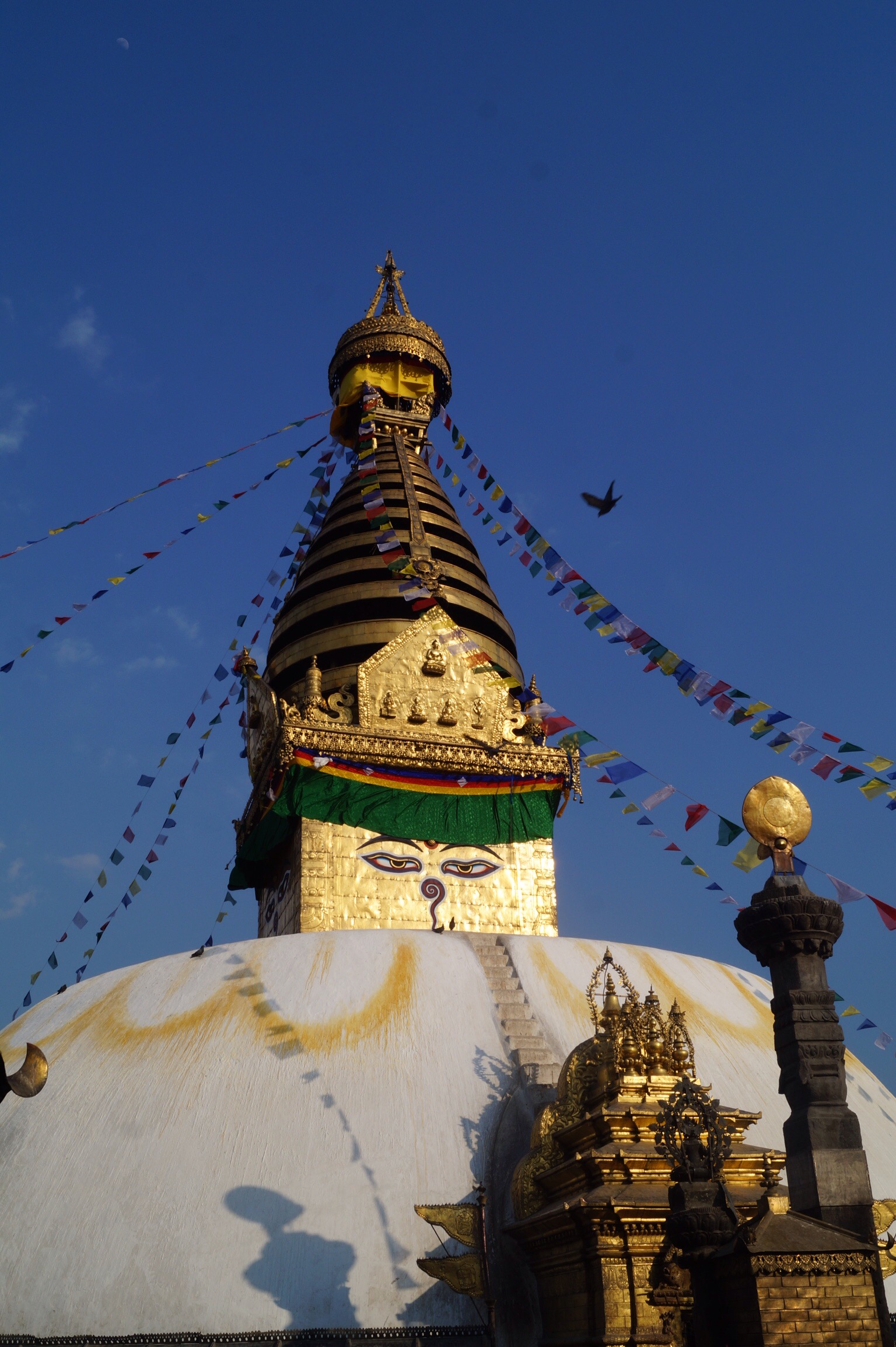

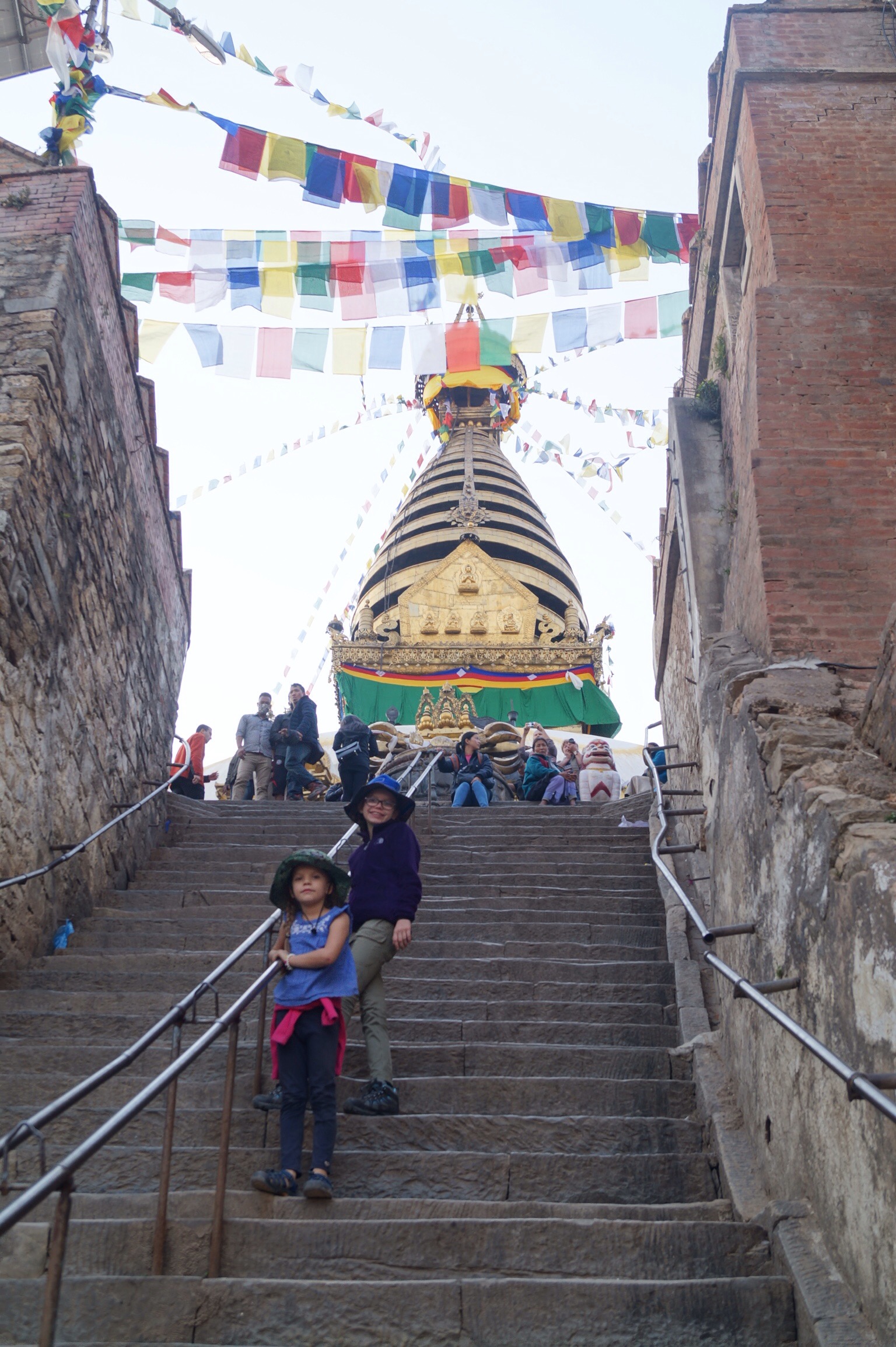 Having seem one magnificent stupa it was only right that we went out to Bodnath to see the biggest stupa of them all. We were lucky in that we arrived on the last day of Tibetan New Year and whilst things were winding down there were still Tibetan monks giving a service and many pilgrims circling the stupa. Food and drink were been served to all, including us as they insisted we join them for some sweet milky tea. While looking at the amazing paintings of the Tibetan demons on the walls of one of the monasteries Lucy and Gilly were beckoned over to receive a blessing from one of the monks.
Having seem one magnificent stupa it was only right that we went out to Bodnath to see the biggest stupa of them all. We were lucky in that we arrived on the last day of Tibetan New Year and whilst things were winding down there were still Tibetan monks giving a service and many pilgrims circling the stupa. Food and drink were been served to all, including us as they insisted we join them for some sweet milky tea. While looking at the amazing paintings of the Tibetan demons on the walls of one of the monasteries Lucy and Gilly were beckoned over to receive a blessing from one of the monks.
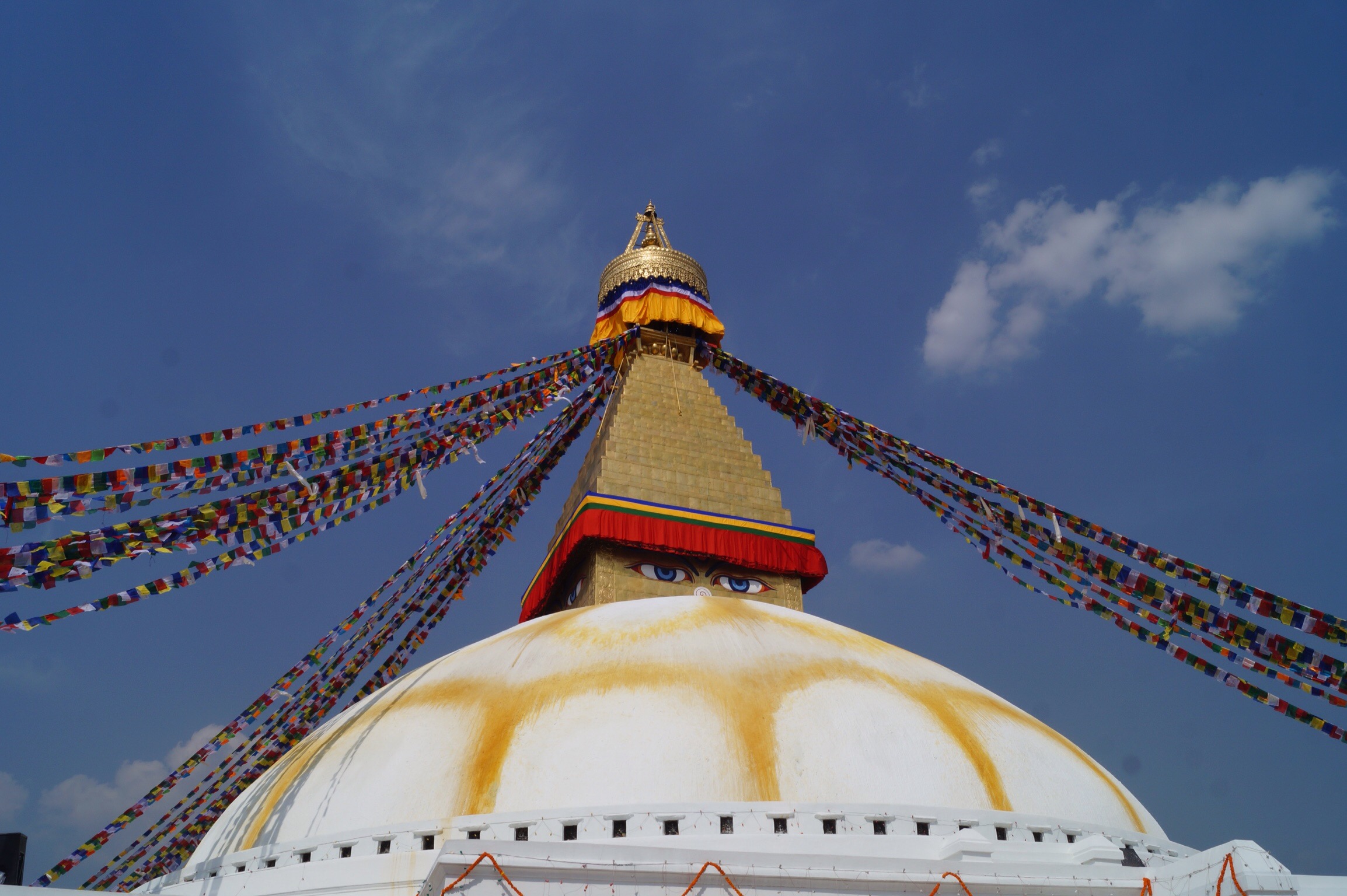
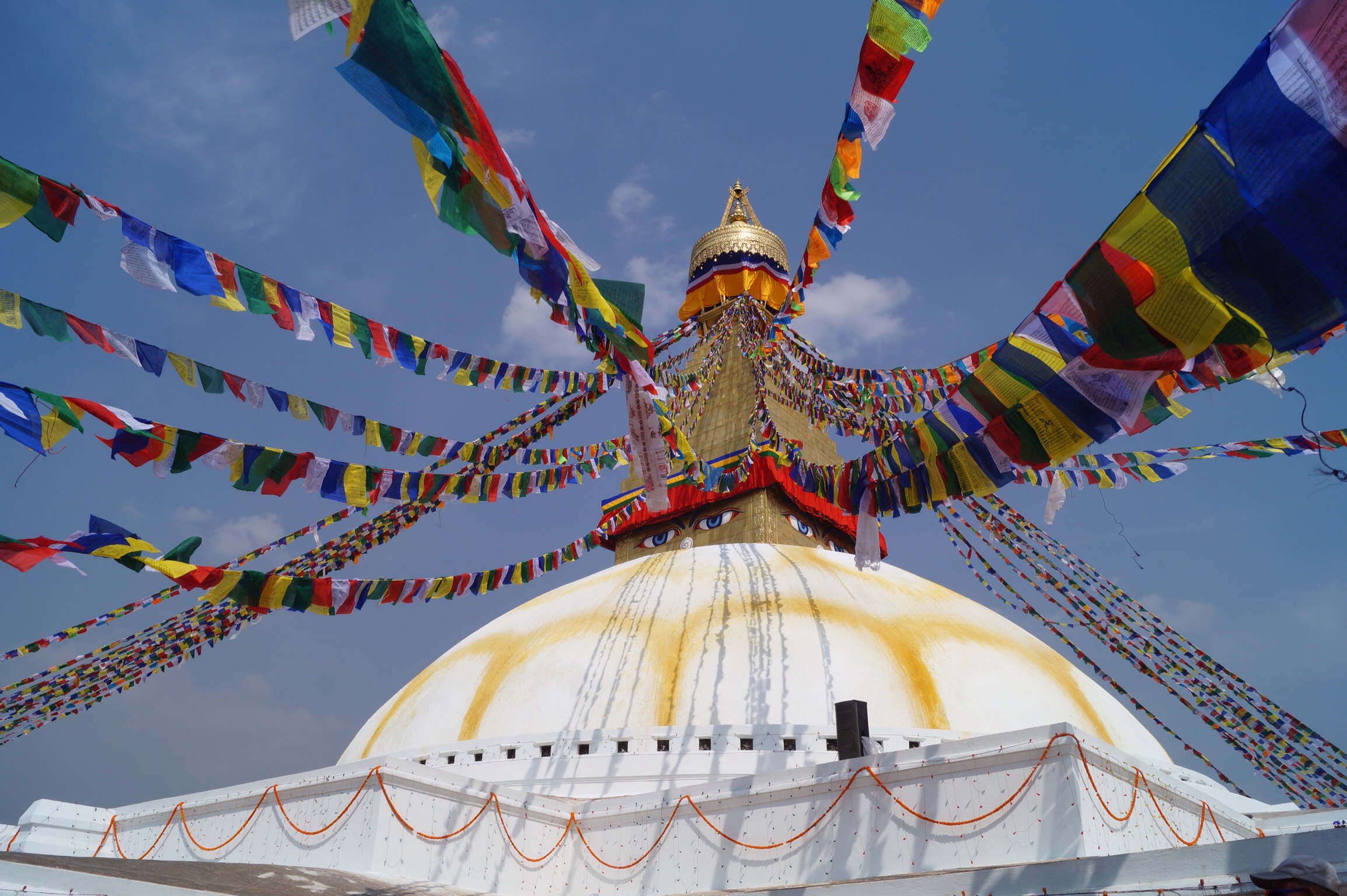
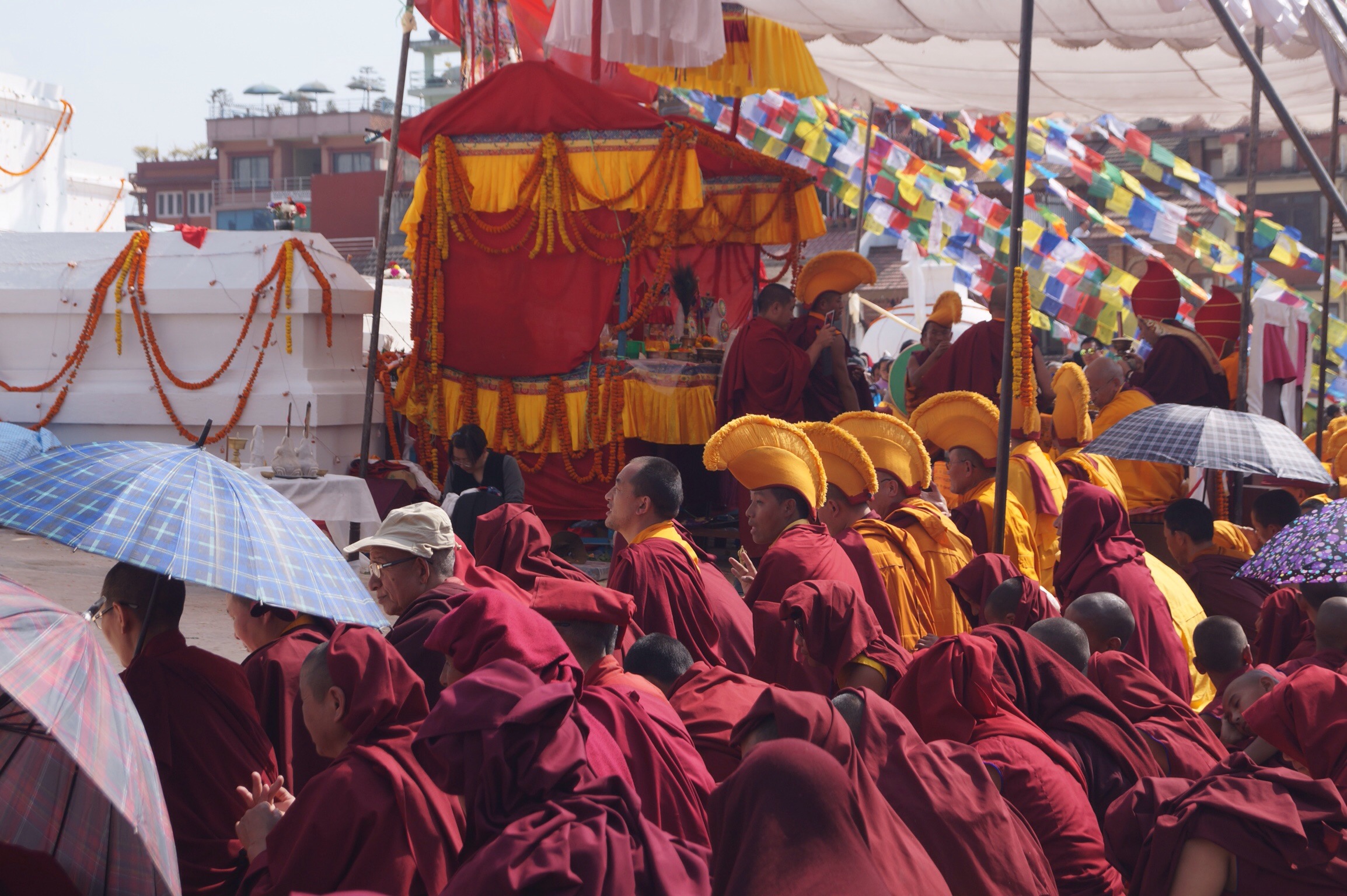

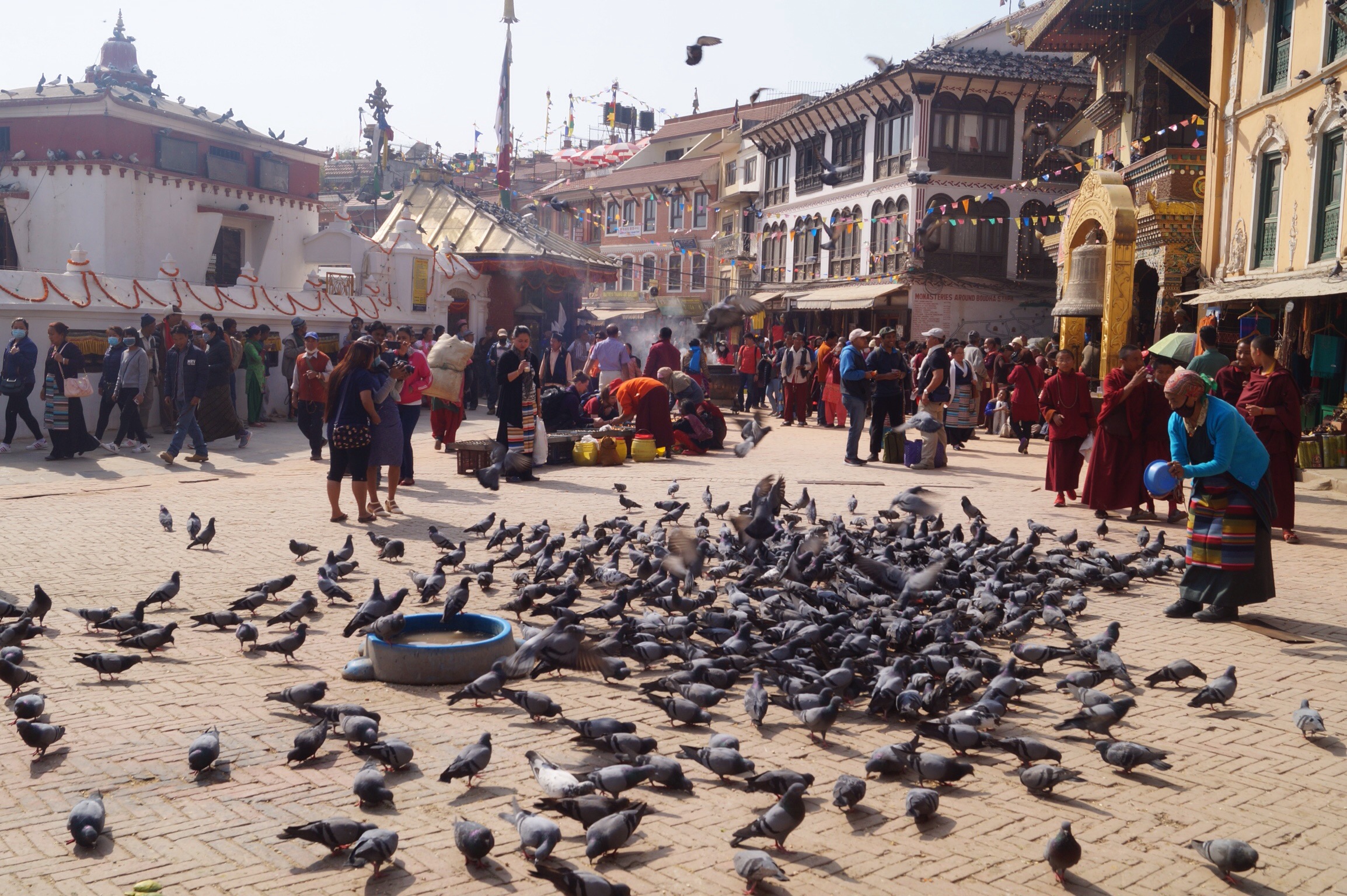 After a few days of culture, shopping and steaks we headed back to the truck to drive all of 12kms to another ancient Royal city, Bhaktapur. First we had to find somewhere to stay. There was no way we could take the truck into the town down the narrow cobbled lanes. Instead we parked next to a hotel on the main highway overlooking the brick works. We do get to enjoy some wonderful spots!
After a few days of culture, shopping and steaks we headed back to the truck to drive all of 12kms to another ancient Royal city, Bhaktapur. First we had to find somewhere to stay. There was no way we could take the truck into the town down the narrow cobbled lanes. Instead we parked next to a hotel on the main highway overlooking the brick works. We do get to enjoy some wonderful spots!
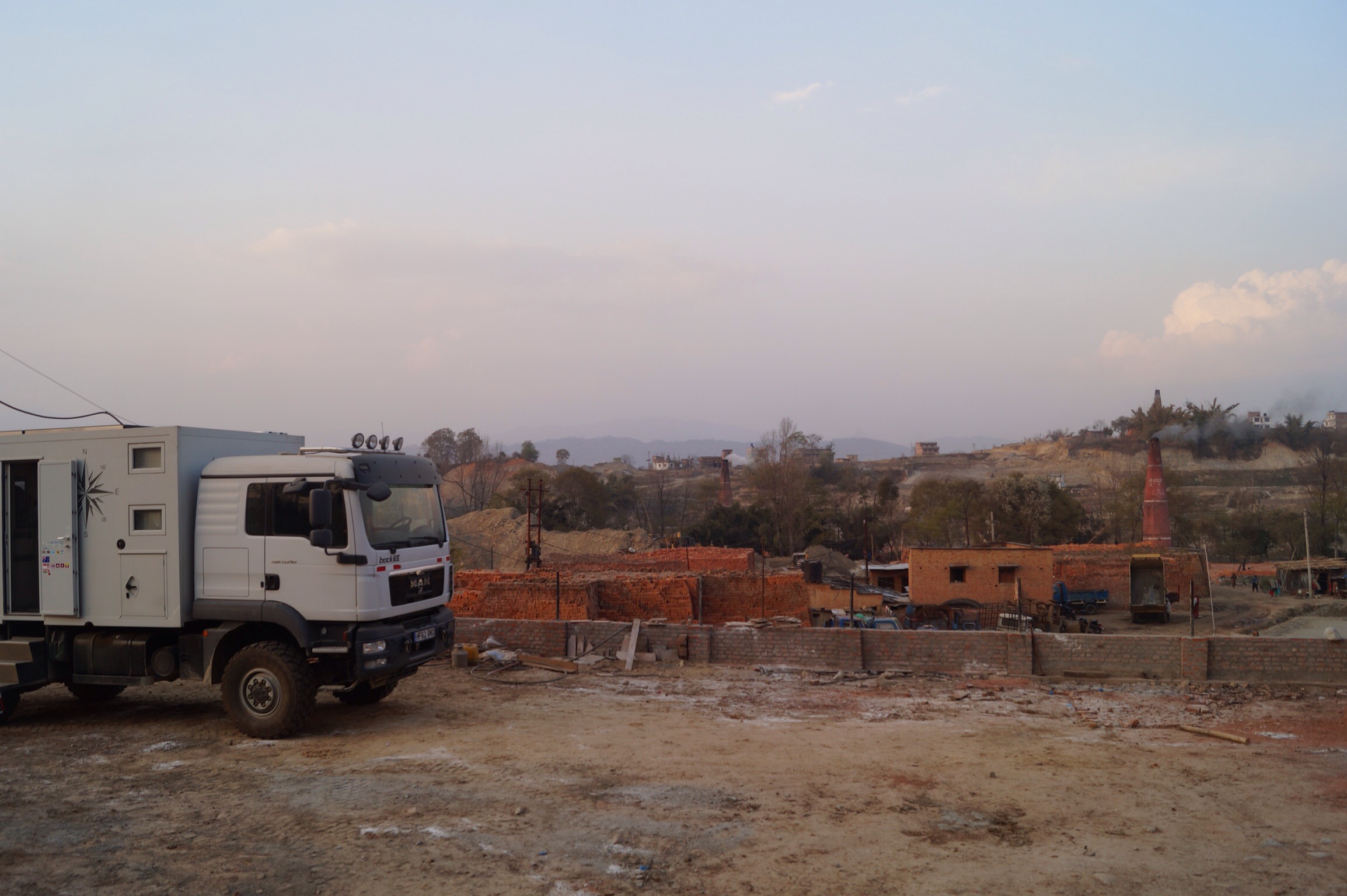 The upside was that it is always good to be back in the truck and it was only a short walk into the wonderful city. Although again damaged by the earthquake with some really important temples destroyed the remaining temples in each of the three Royal squares were magnificent. Throughout the town there were many ancient Newari buildings with ornately carved windows. The Peacock Window is the most famous but the intricate carvings could be found everywhere.
The upside was that it is always good to be back in the truck and it was only a short walk into the wonderful city. Although again damaged by the earthquake with some really important temples destroyed the remaining temples in each of the three Royal squares were magnificent. Throughout the town there were many ancient Newari buildings with ornately carved windows. The Peacock Window is the most famous but the intricate carvings could be found everywhere.
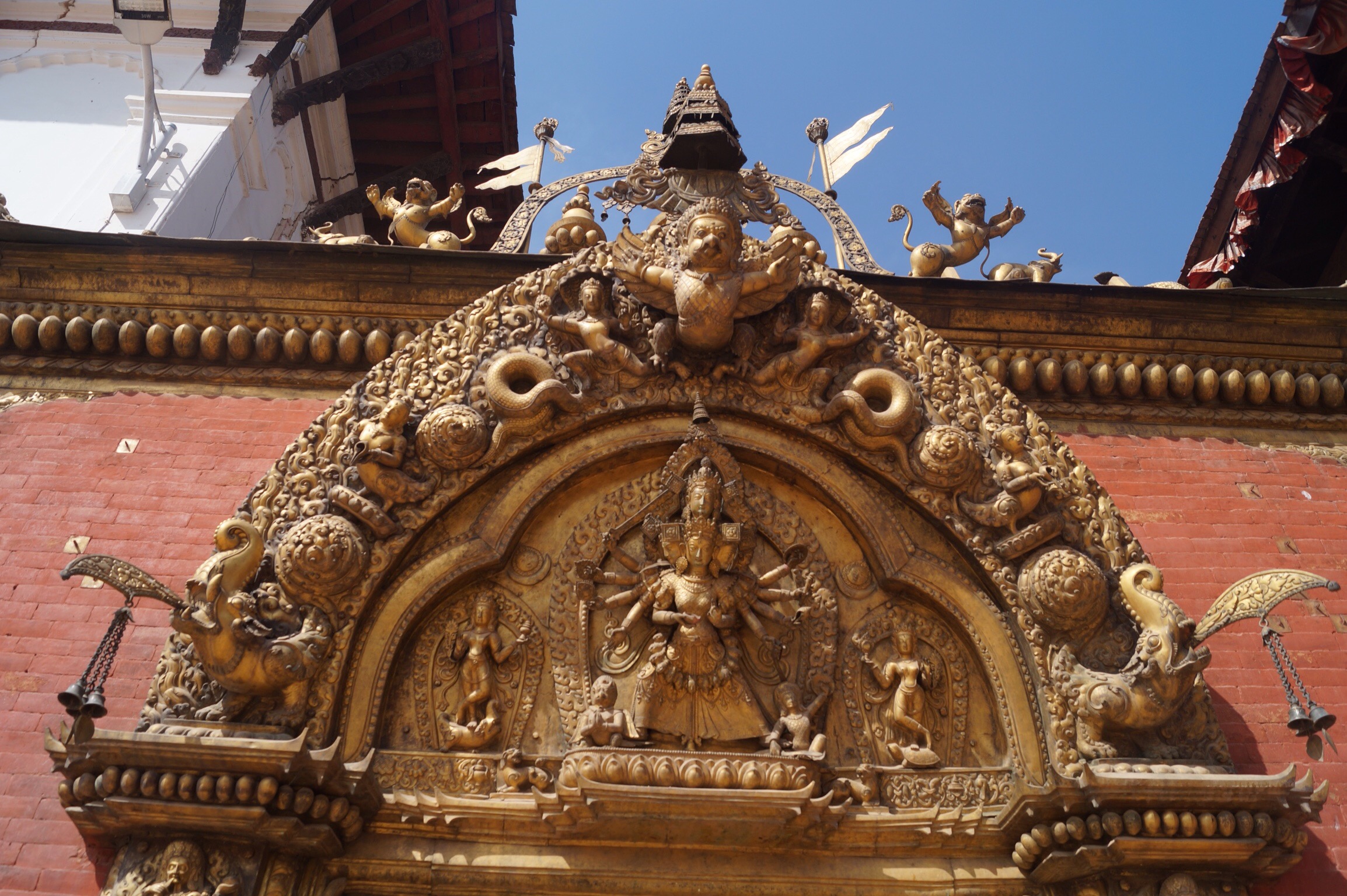
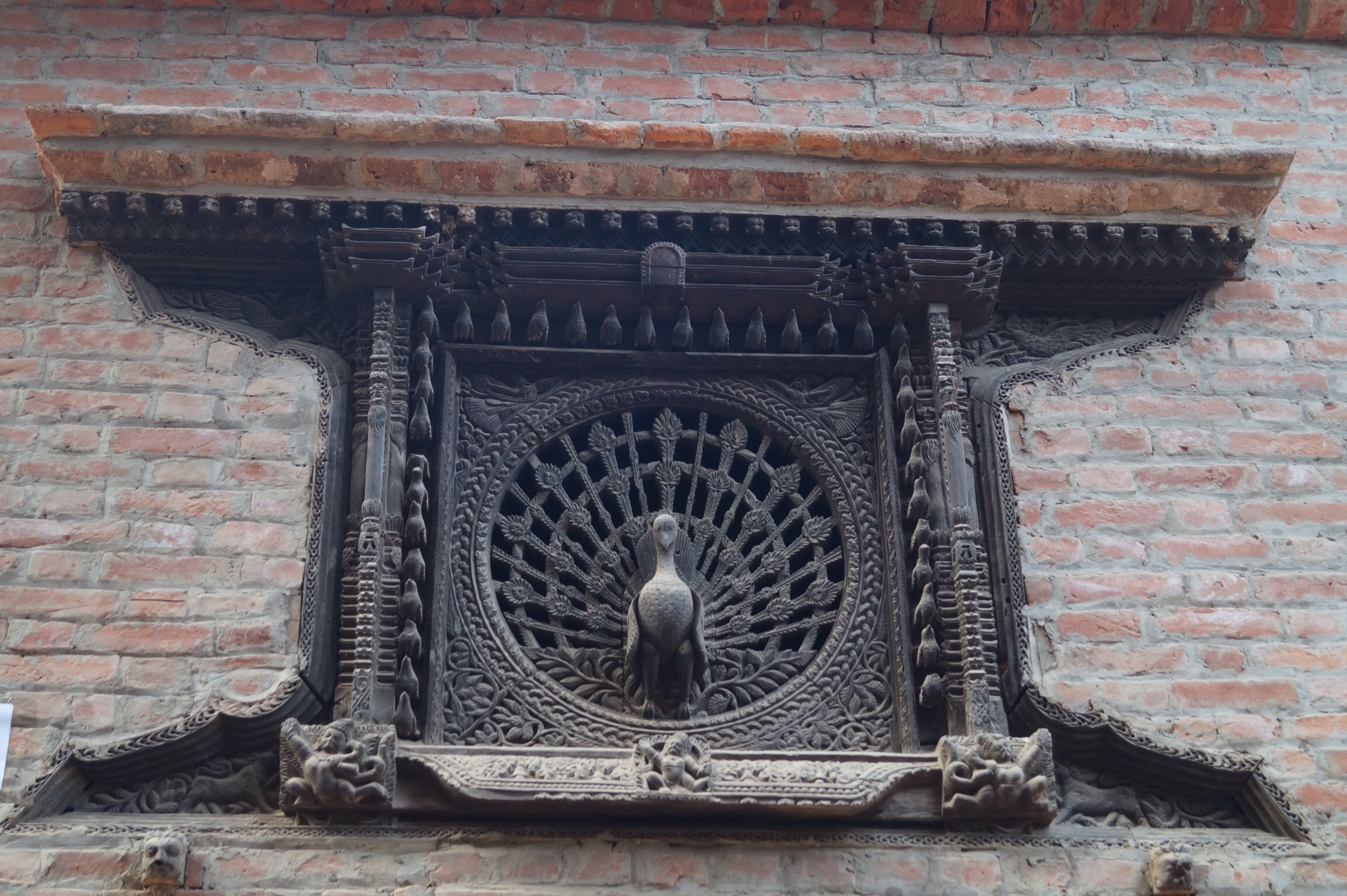 It was lovely to just sit on the steps of a temple and enjoy the view whilst watching the local towns people go about their daily routines. It was much more peaceful and less frantic than Kathmandu and although it was a lived in city it still retained its medieval feeling.
It was lovely to just sit on the steps of a temple and enjoy the view whilst watching the local towns people go about their daily routines. It was much more peaceful and less frantic than Kathmandu and although it was a lived in city it still retained its medieval feeling.
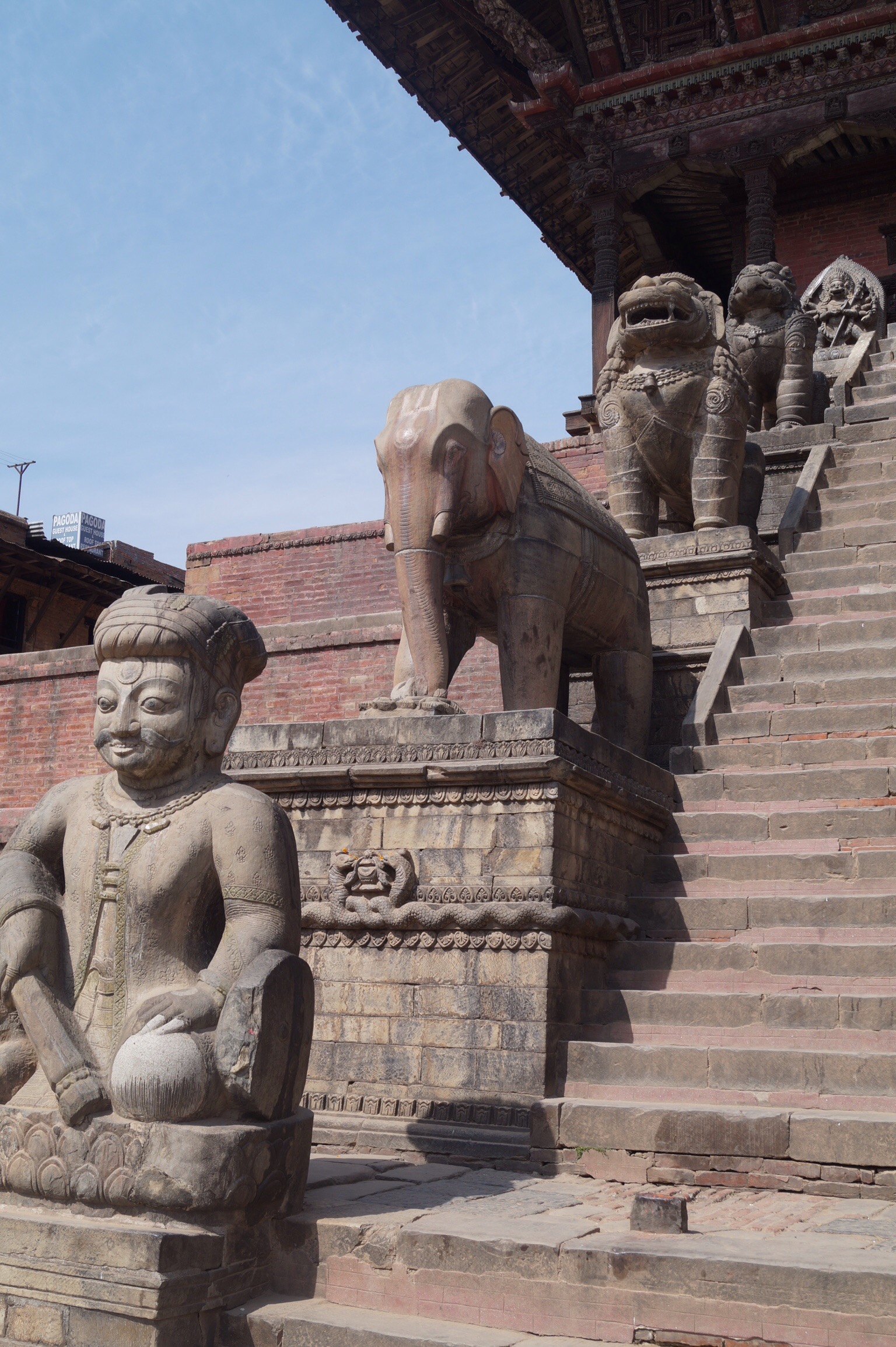
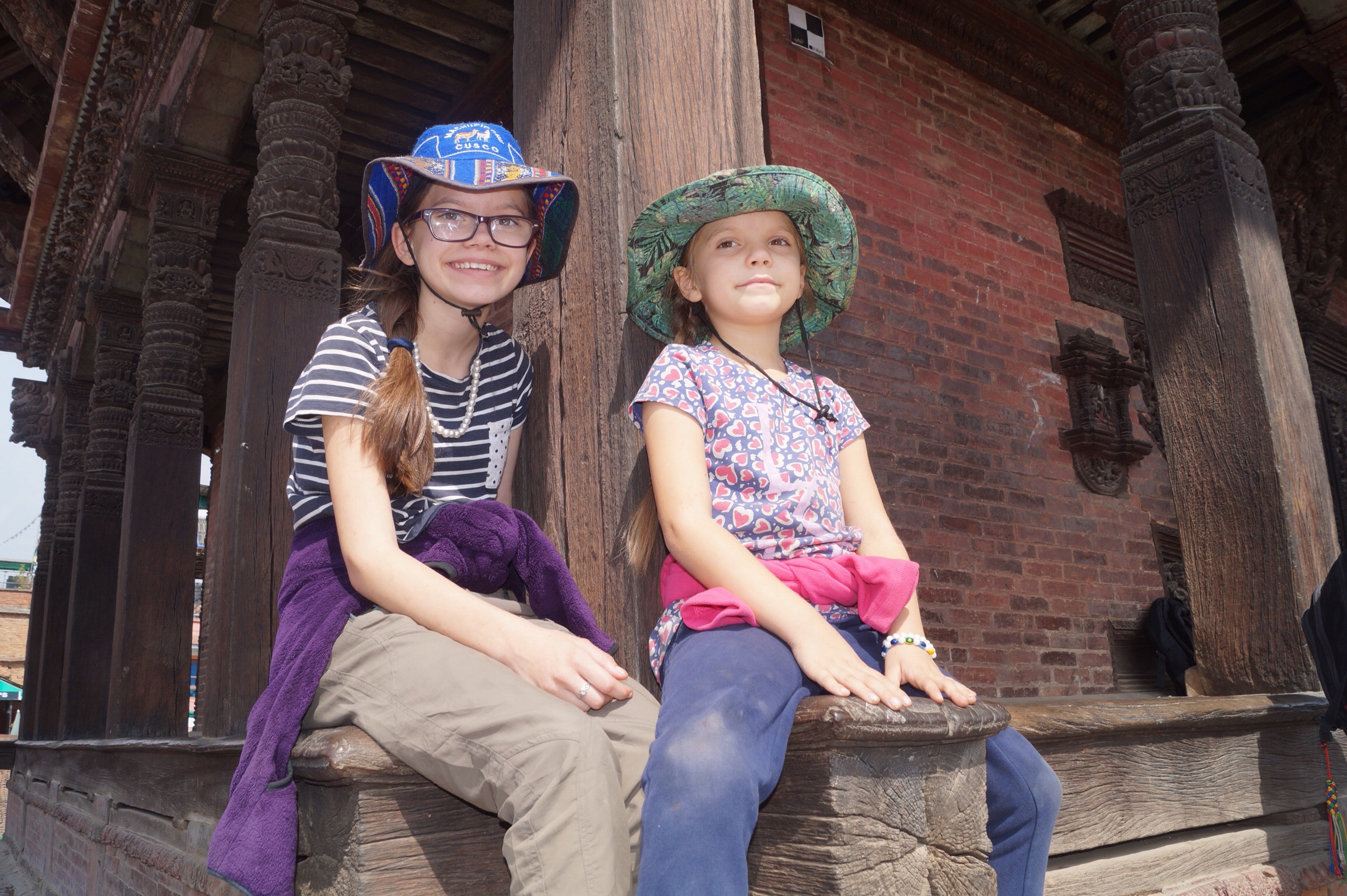
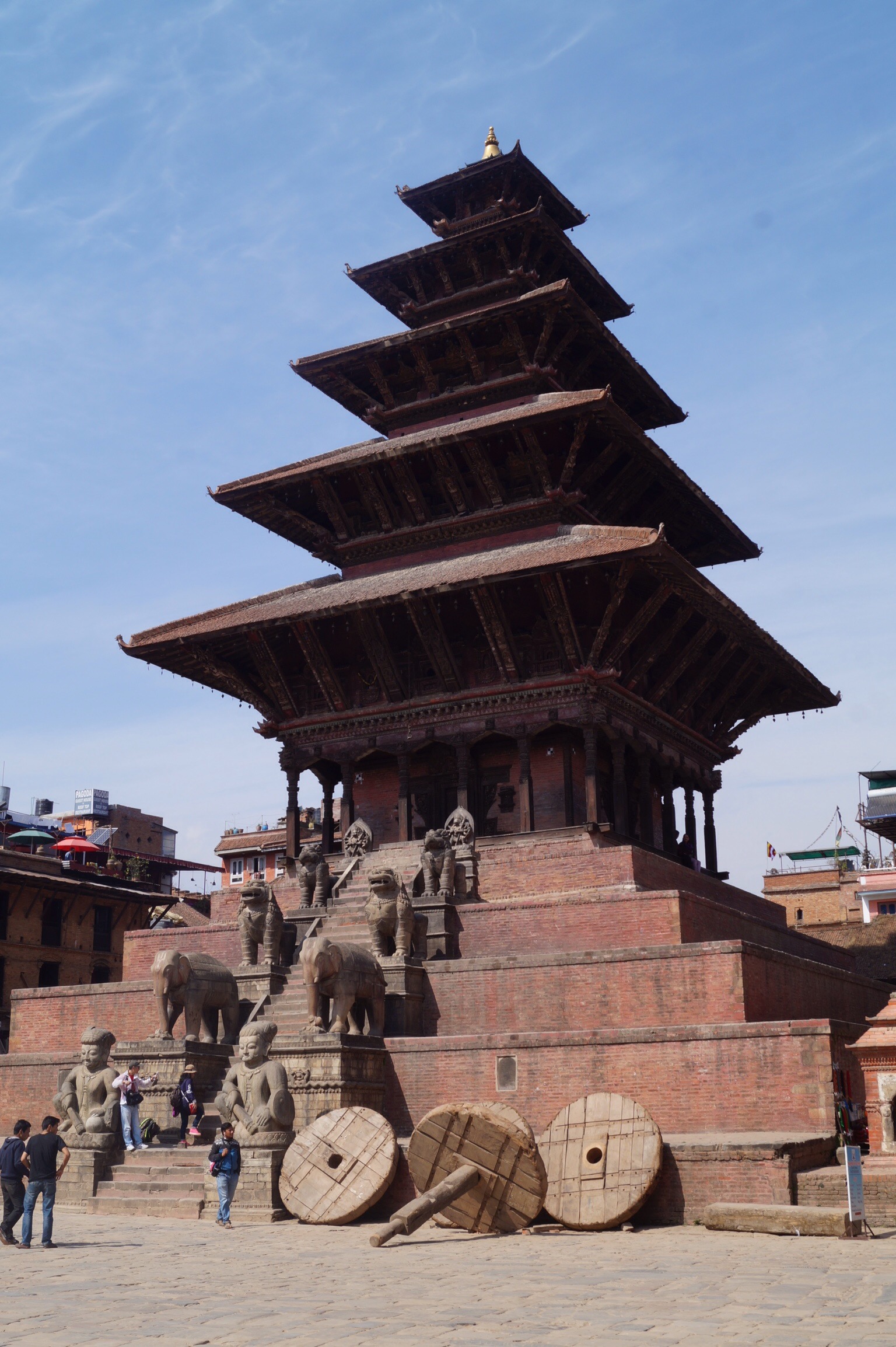
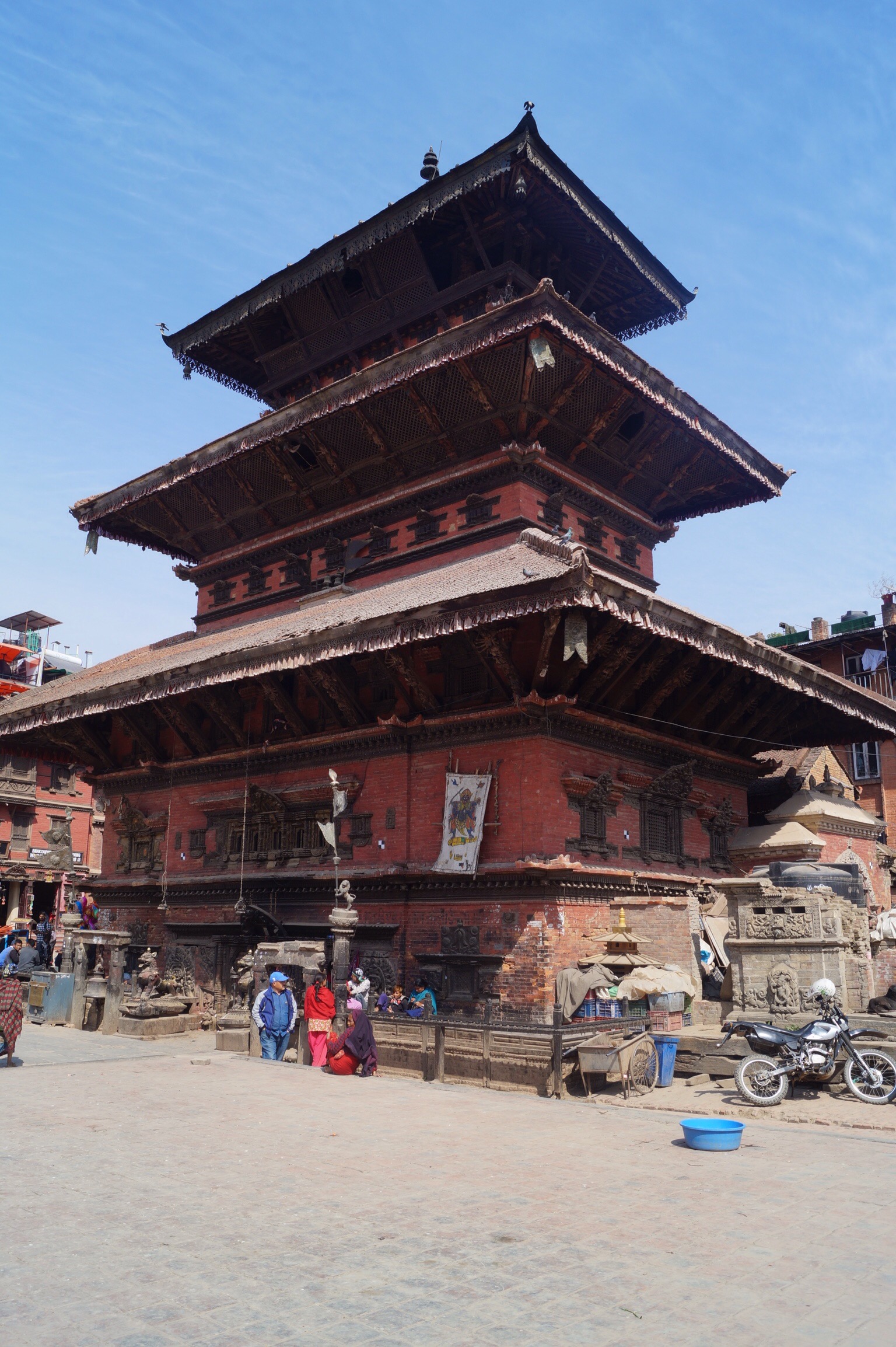
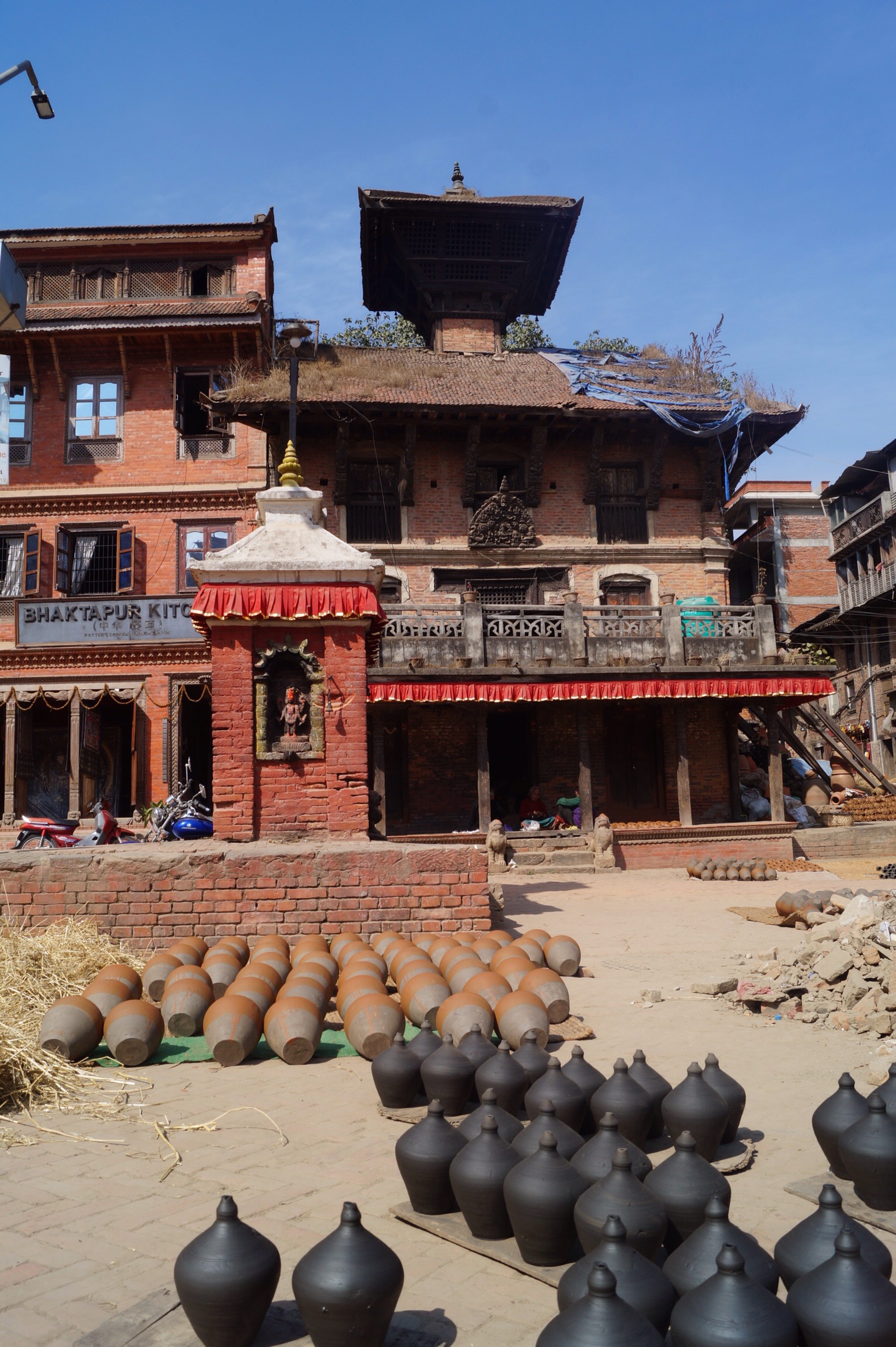

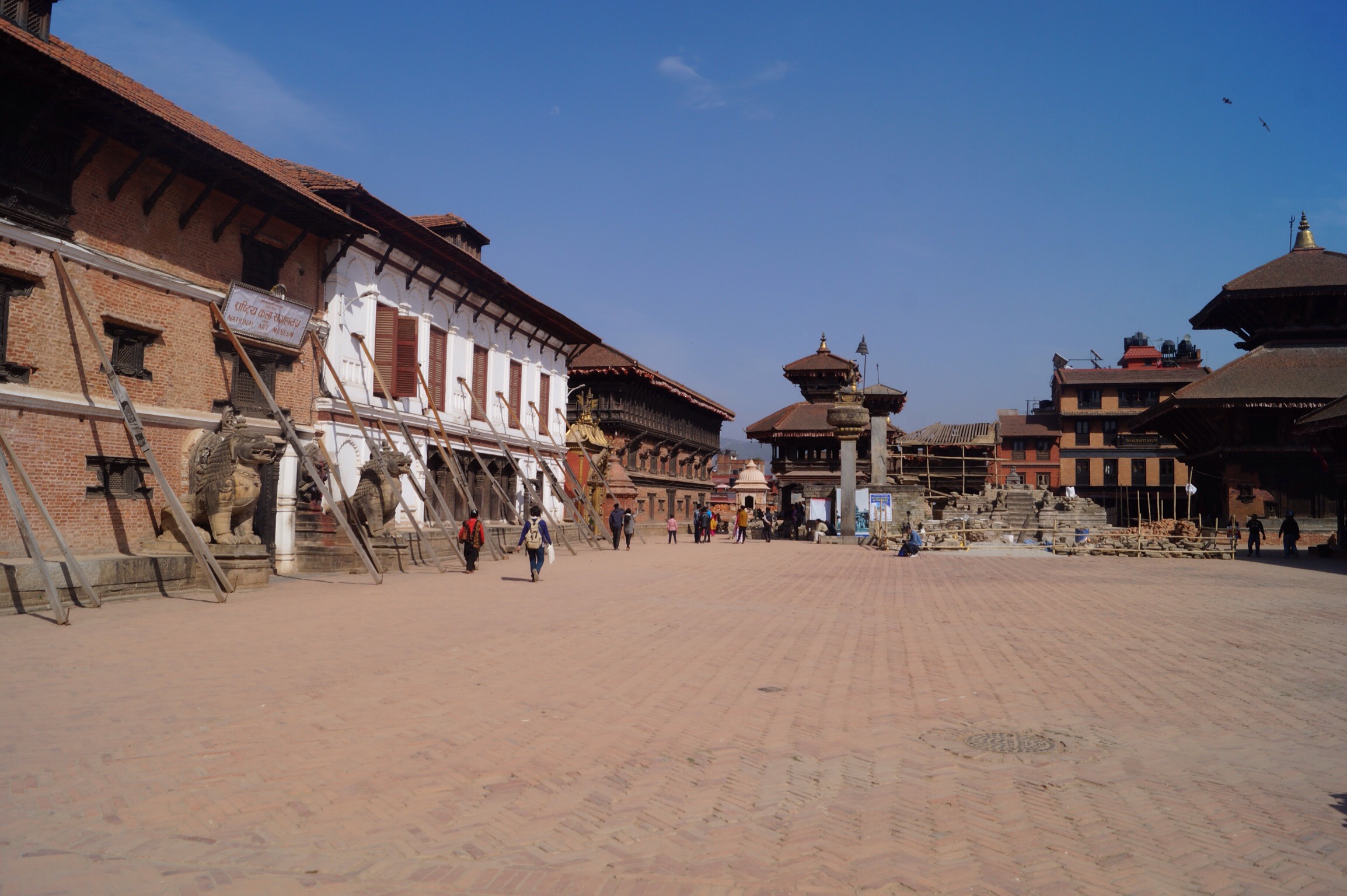
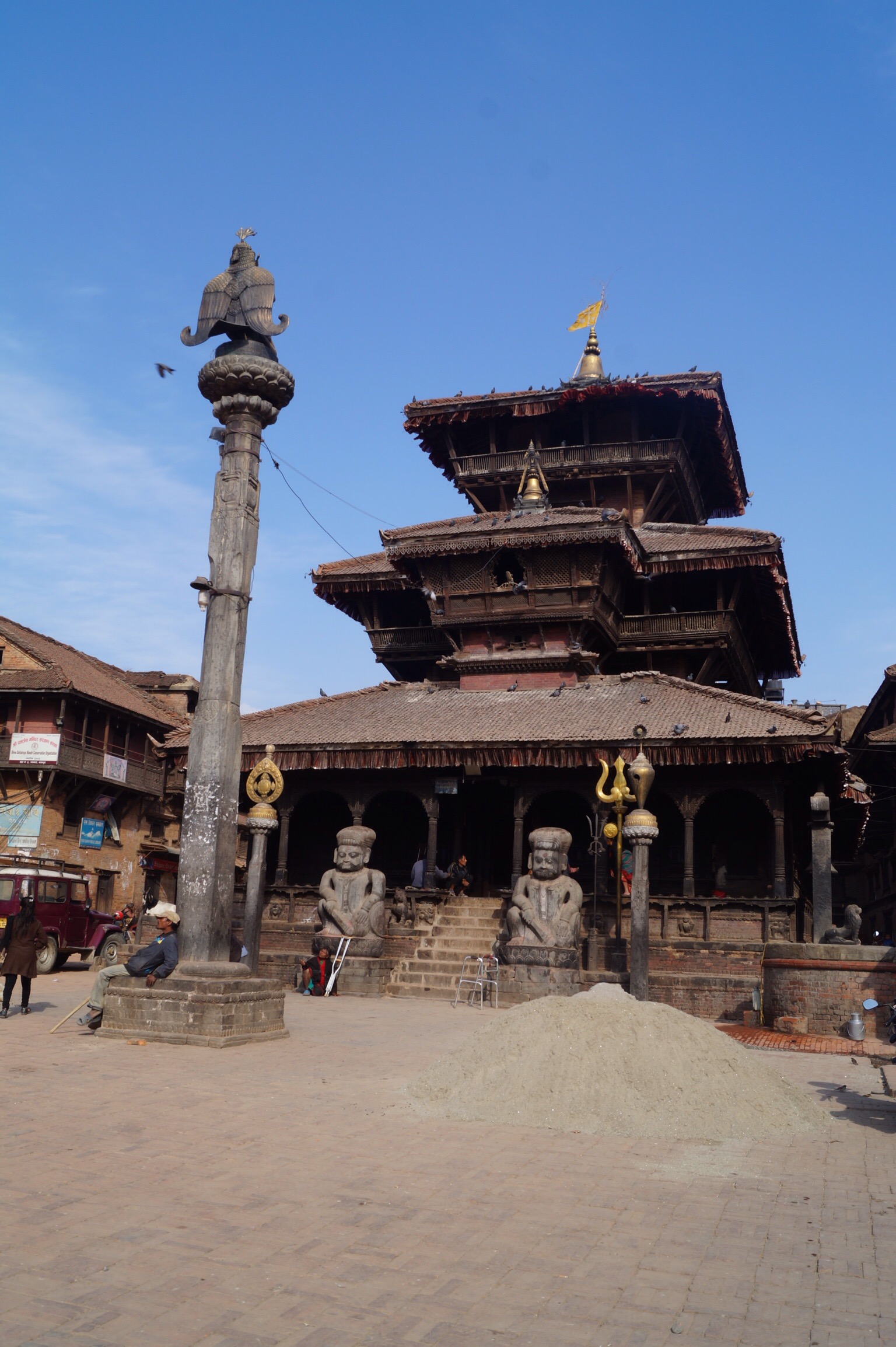 Bhaktapur is also famous for its King Curd, supposedly the richest creamiest yoghurt you will ever taste so we settled in at one of the hole in the wall shops to check this out. Whilst I don't know if it really is the creamiest in the world, I can say it tasted fantastic so much so that we bought a large pot to take away with us.
Bhaktapur is also famous for its King Curd, supposedly the richest creamiest yoghurt you will ever taste so we settled in at one of the hole in the wall shops to check this out. Whilst I don't know if it really is the creamiest in the world, I can say it tasted fantastic so much so that we bought a large pot to take away with us.
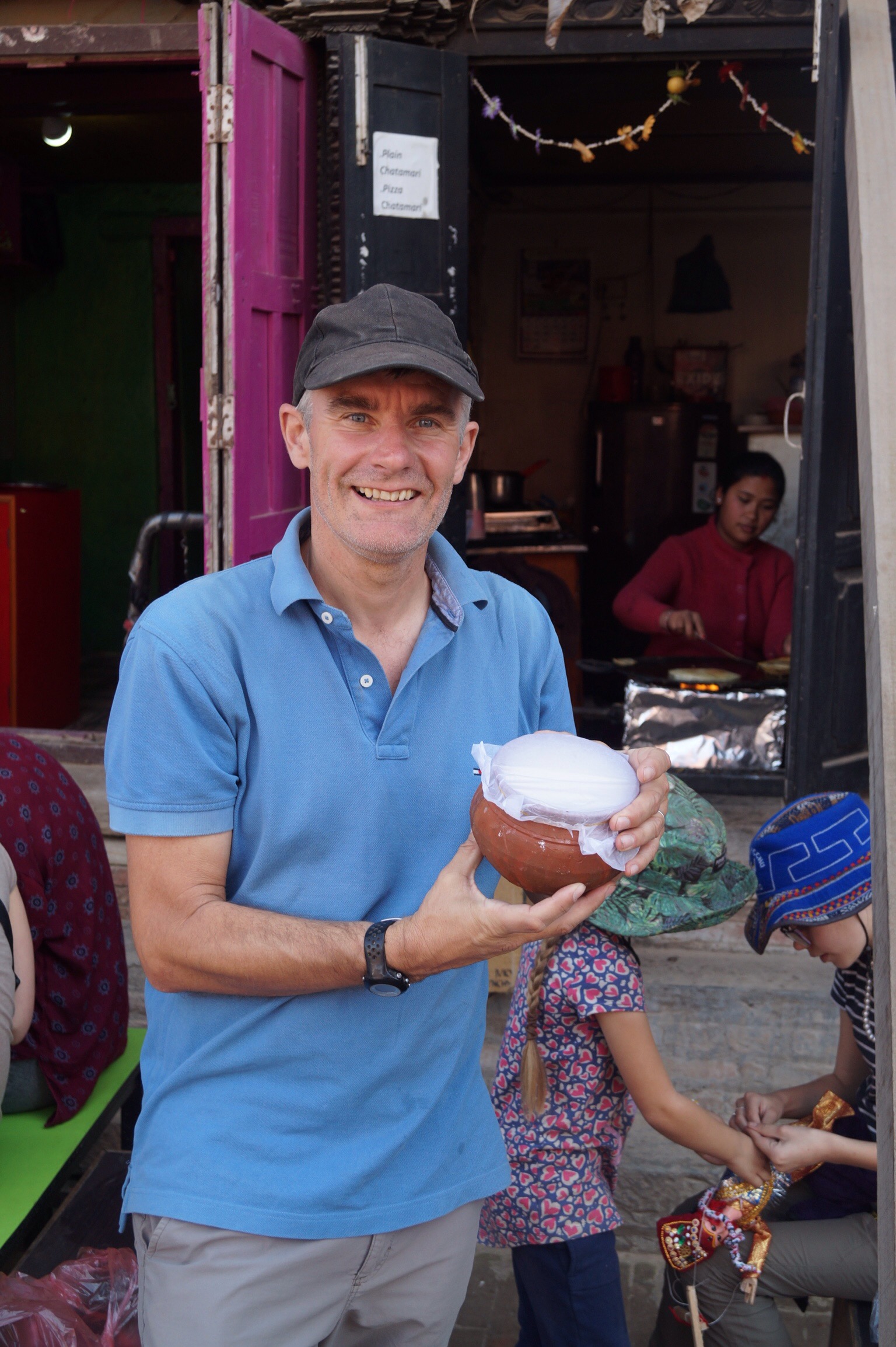 Our time in Kathmandu has been slightly over shadowed by the growing problem of how we get back to Europe. The Nepal border with China is not opening any time soon and our planned route to China via India and Myanmar is now not looking possible due to conflict in the Shan State of Myanmar. I had got myself comfortable that I could drive the truck through Pakistan and we even visited the Pakistan Embassy in Kathmandu to enquire about visas, with the girls flying over with Gilly. However I can only get a visa in London and even then it could take from 2 to 8 weeks. So this does not look possible. Whilst our Nepali visas don't expire until the end of May our Indian visas expire at the end of April so there is a real danger of us been trapped. Whilst Nepal is a wonderful place to be trapped we need to find a way out which may mean we need to ship out of India which will be such a disappointment as we had our hearts set on driving back across Asia and in particular across the Himalayas. Shipping from India will no doubt be a challenge in its own right!
We have been in Nepal nearly two weeks now and whilst we have seen the hills we have not yet seen the mighty mountains for which it is famous. When we have been in places where we could potentially see them they have either been shrouded in cloud or the haze has been so strong it was not possible to see them. So it's time to leave the Kathmandu Valley and head to Pokhara where hopefully the clouds will part to reveal the beauty behind them.
Our time in Kathmandu has been slightly over shadowed by the growing problem of how we get back to Europe. The Nepal border with China is not opening any time soon and our planned route to China via India and Myanmar is now not looking possible due to conflict in the Shan State of Myanmar. I had got myself comfortable that I could drive the truck through Pakistan and we even visited the Pakistan Embassy in Kathmandu to enquire about visas, with the girls flying over with Gilly. However I can only get a visa in London and even then it could take from 2 to 8 weeks. So this does not look possible. Whilst our Nepali visas don't expire until the end of May our Indian visas expire at the end of April so there is a real danger of us been trapped. Whilst Nepal is a wonderful place to be trapped we need to find a way out which may mean we need to ship out of India which will be such a disappointment as we had our hearts set on driving back across Asia and in particular across the Himalayas. Shipping from India will no doubt be a challenge in its own right!
We have been in Nepal nearly two weeks now and whilst we have seen the hills we have not yet seen the mighty mountains for which it is famous. When we have been in places where we could potentially see them they have either been shrouded in cloud or the haze has been so strong it was not possible to see them. So it's time to leave the Kathmandu Valley and head to Pokhara where hopefully the clouds will part to reveal the beauty behind them. 











